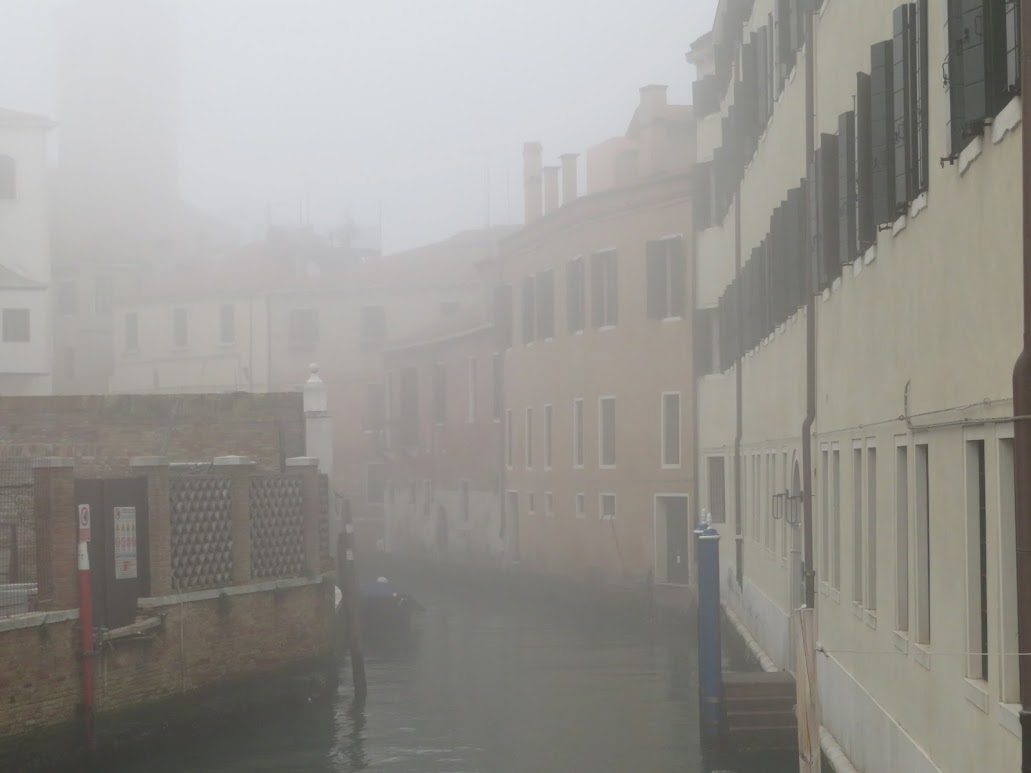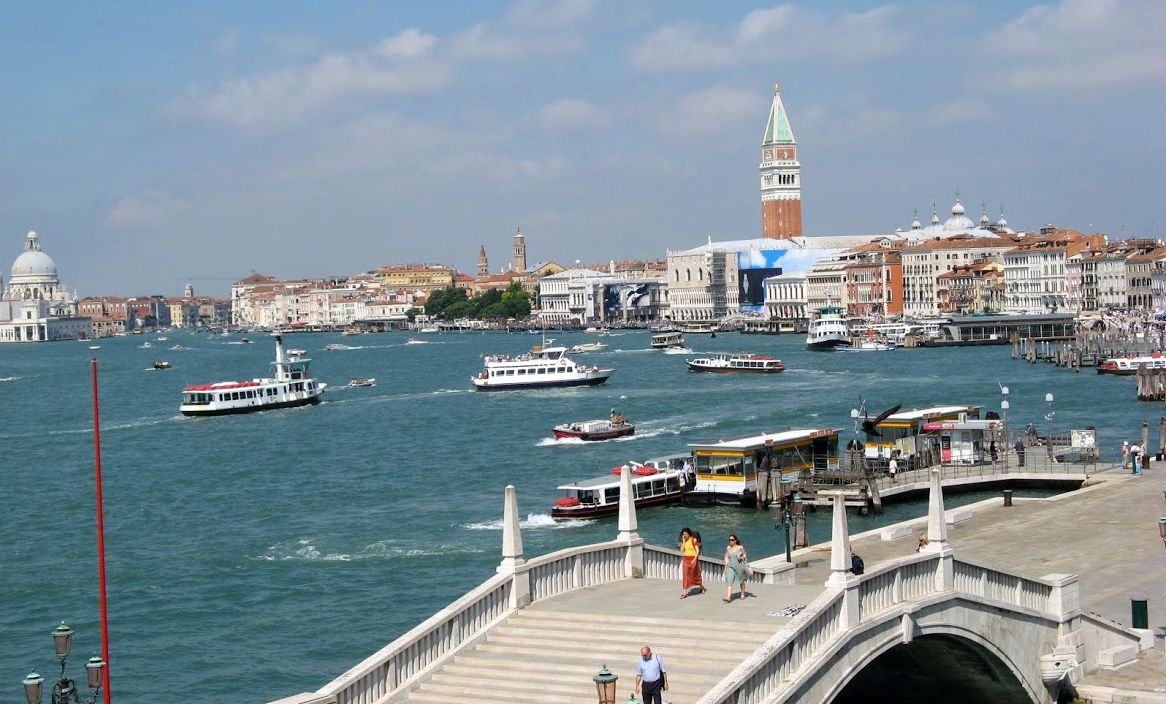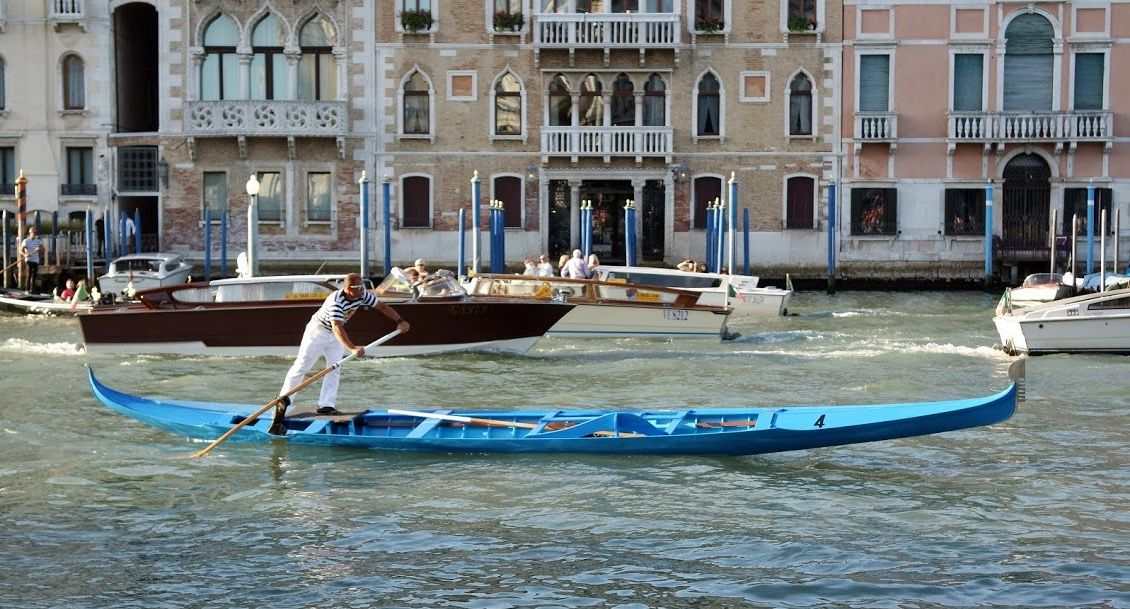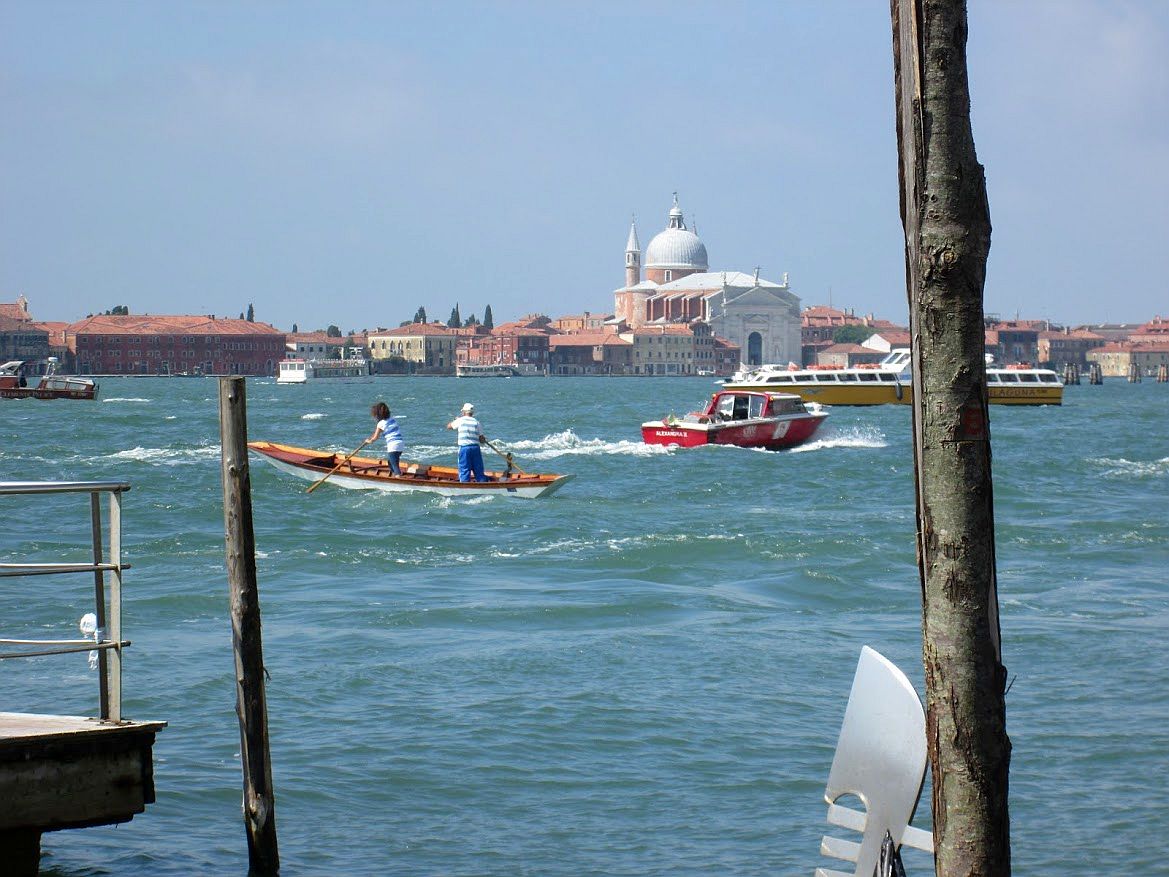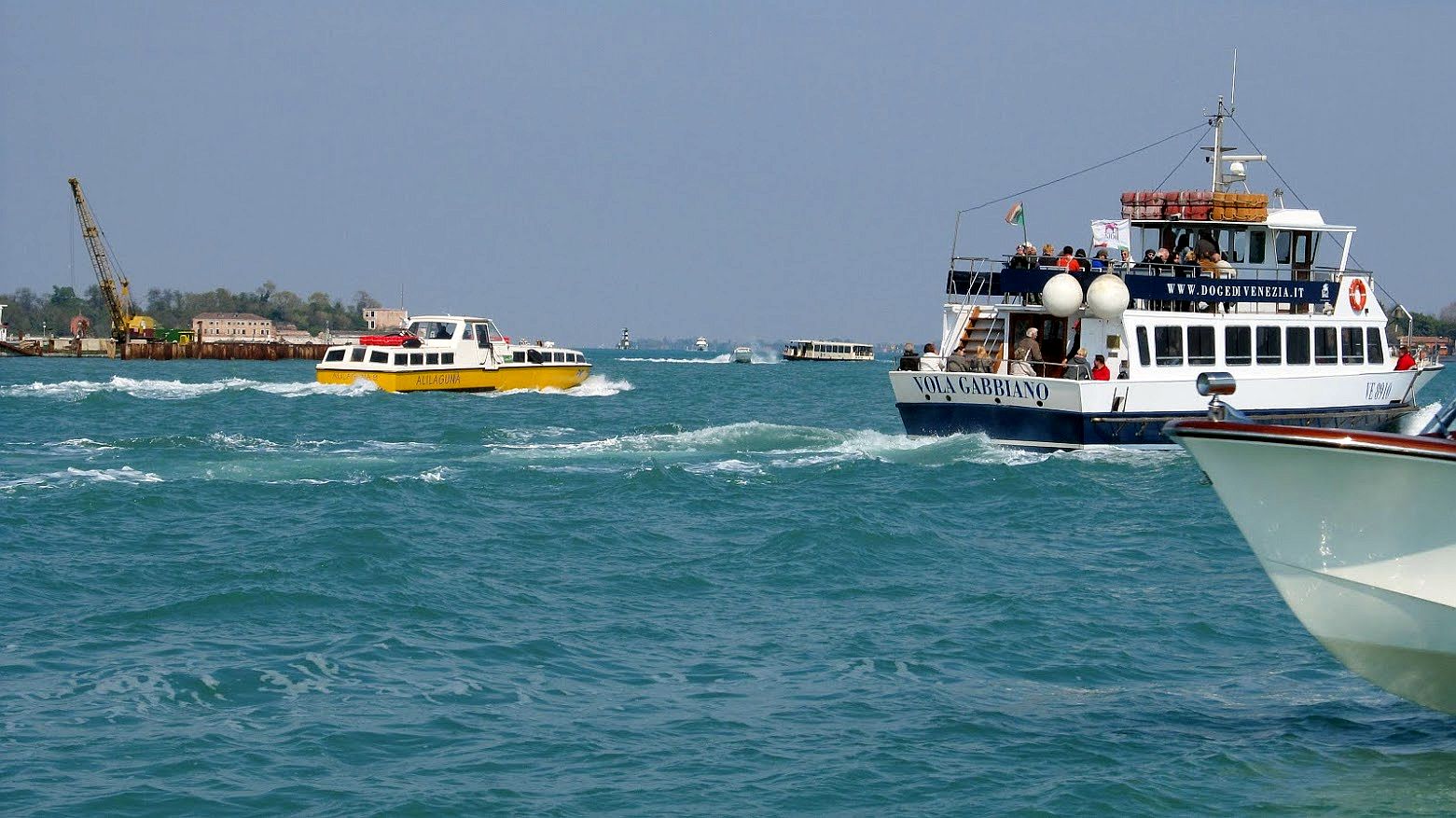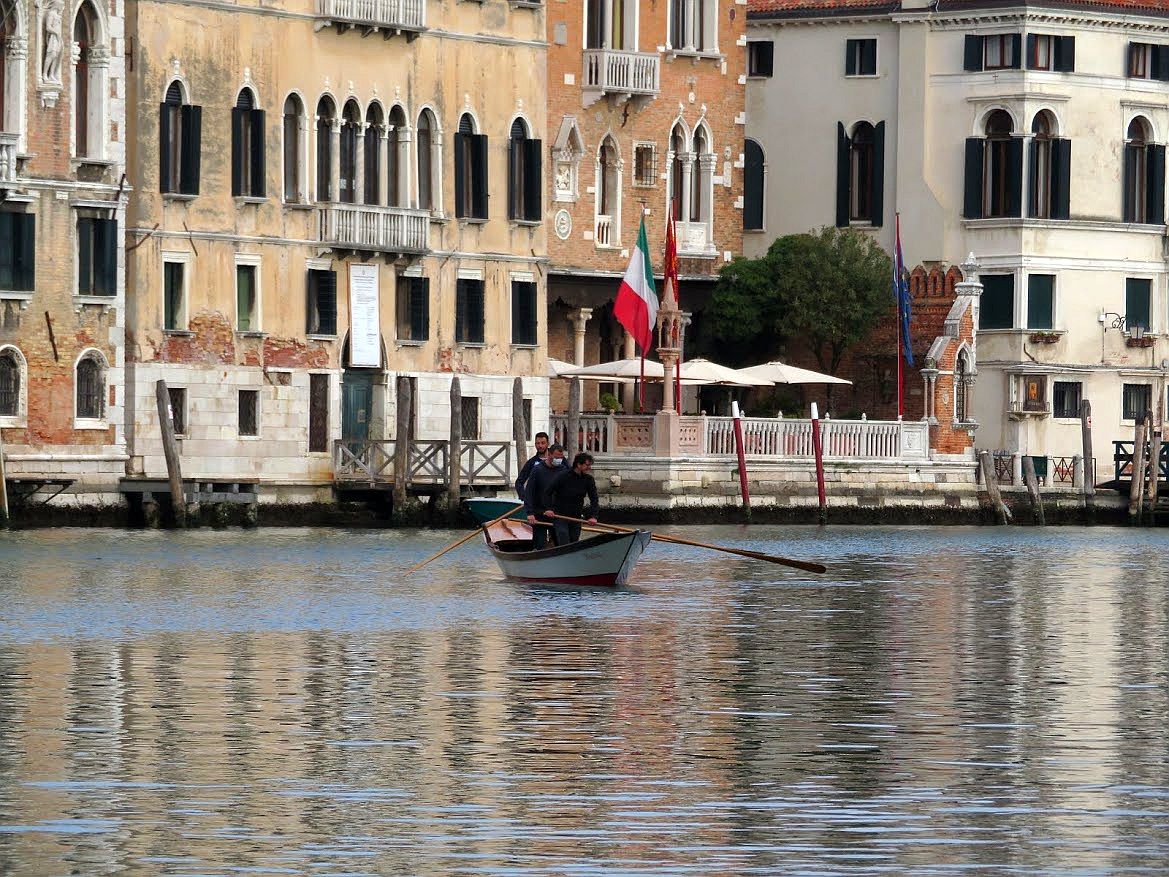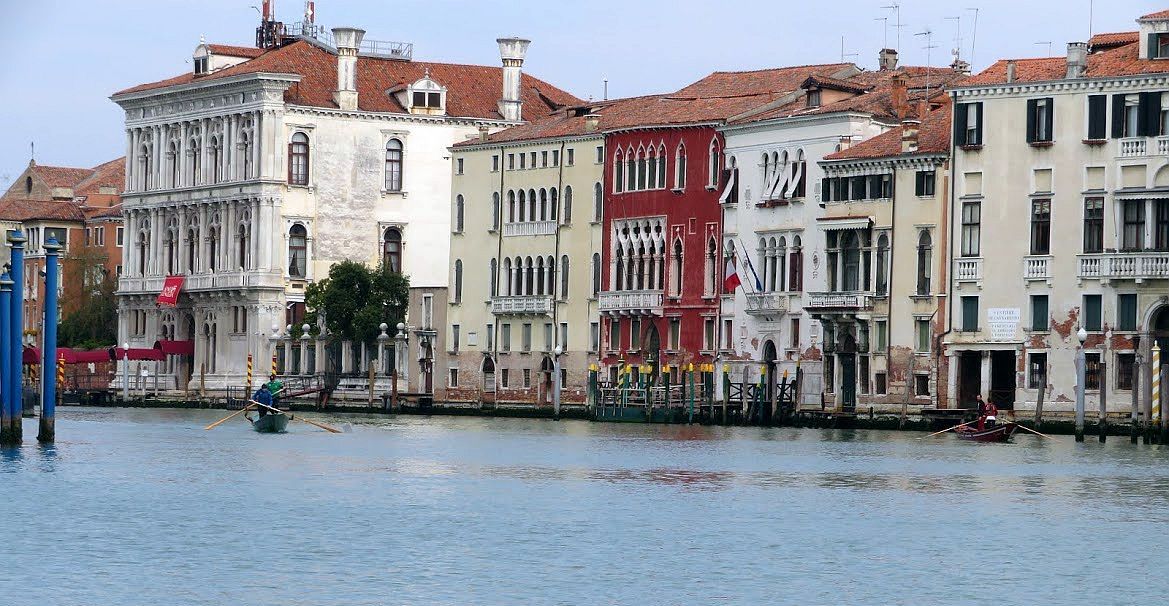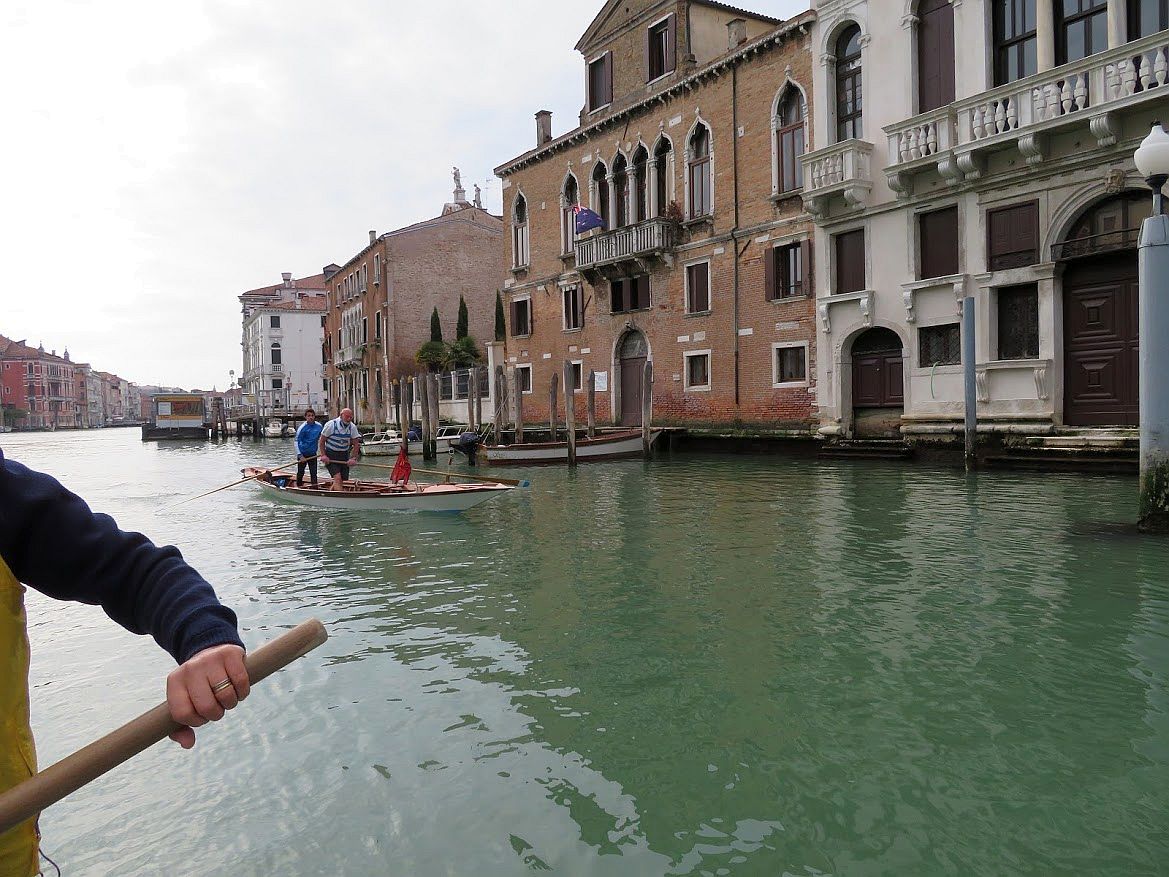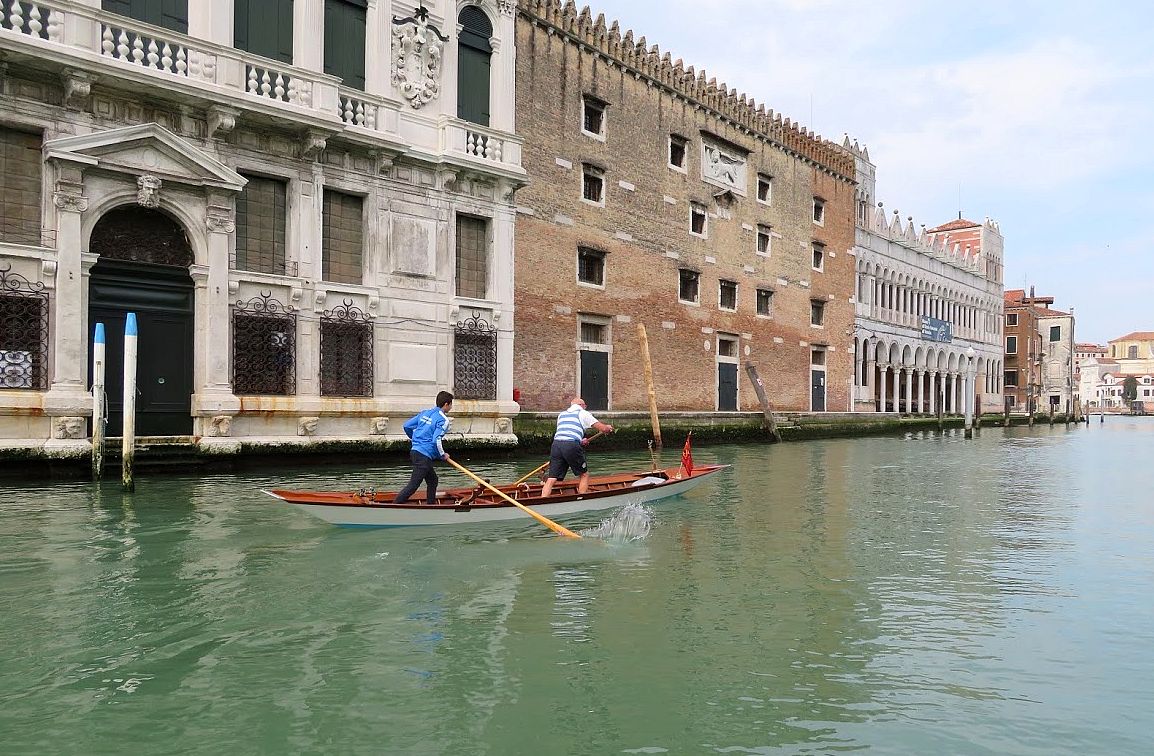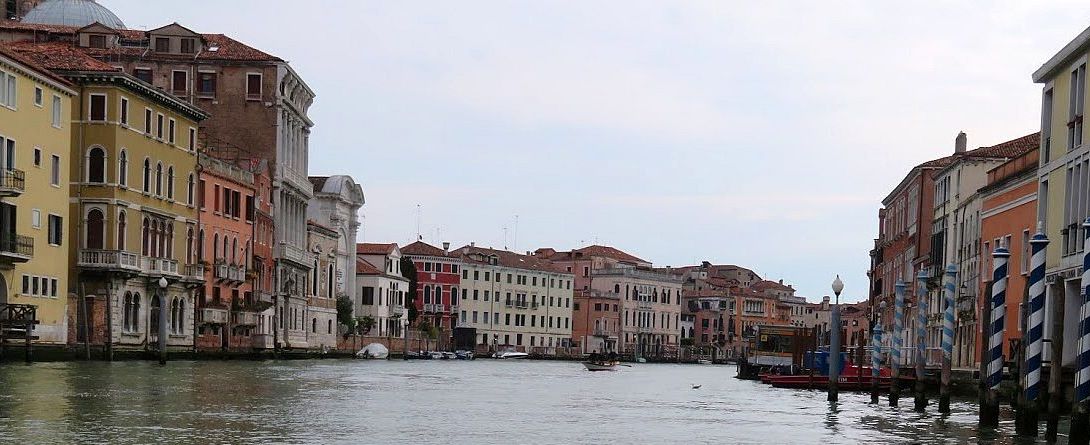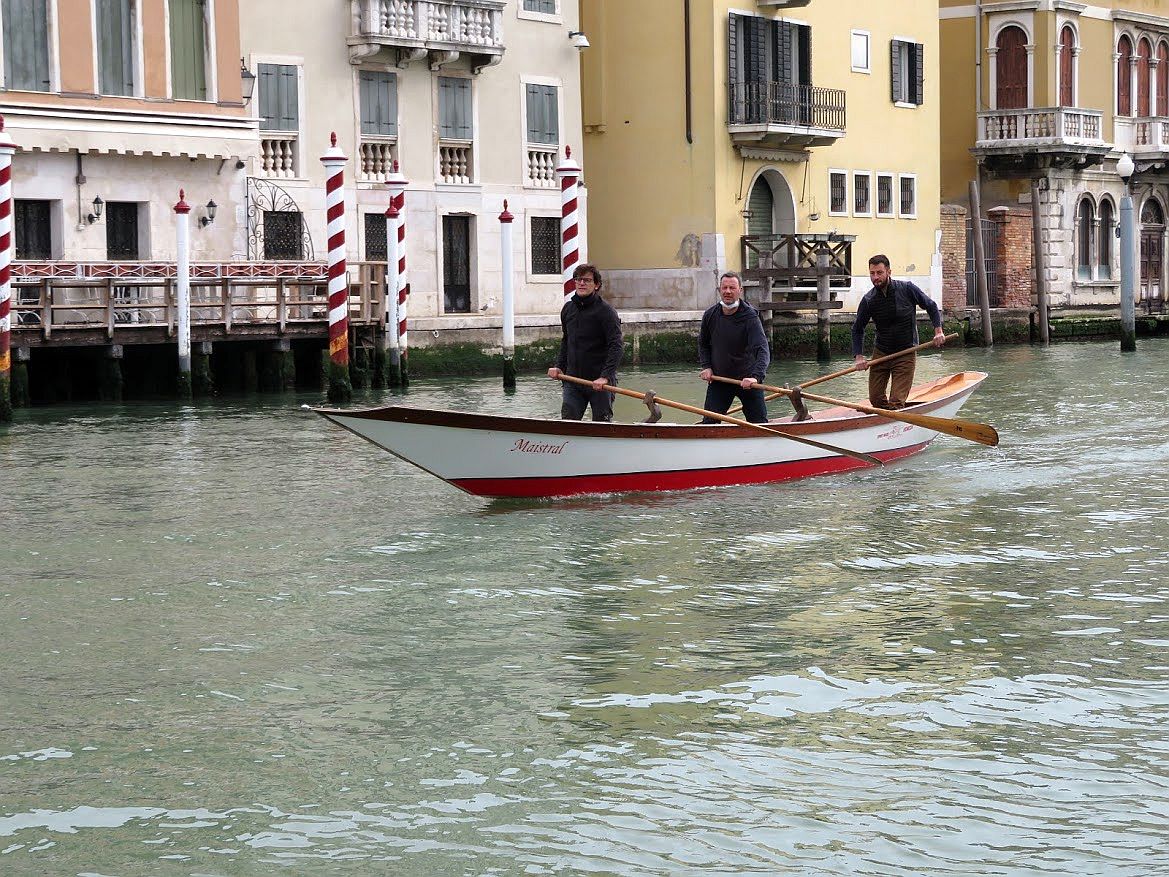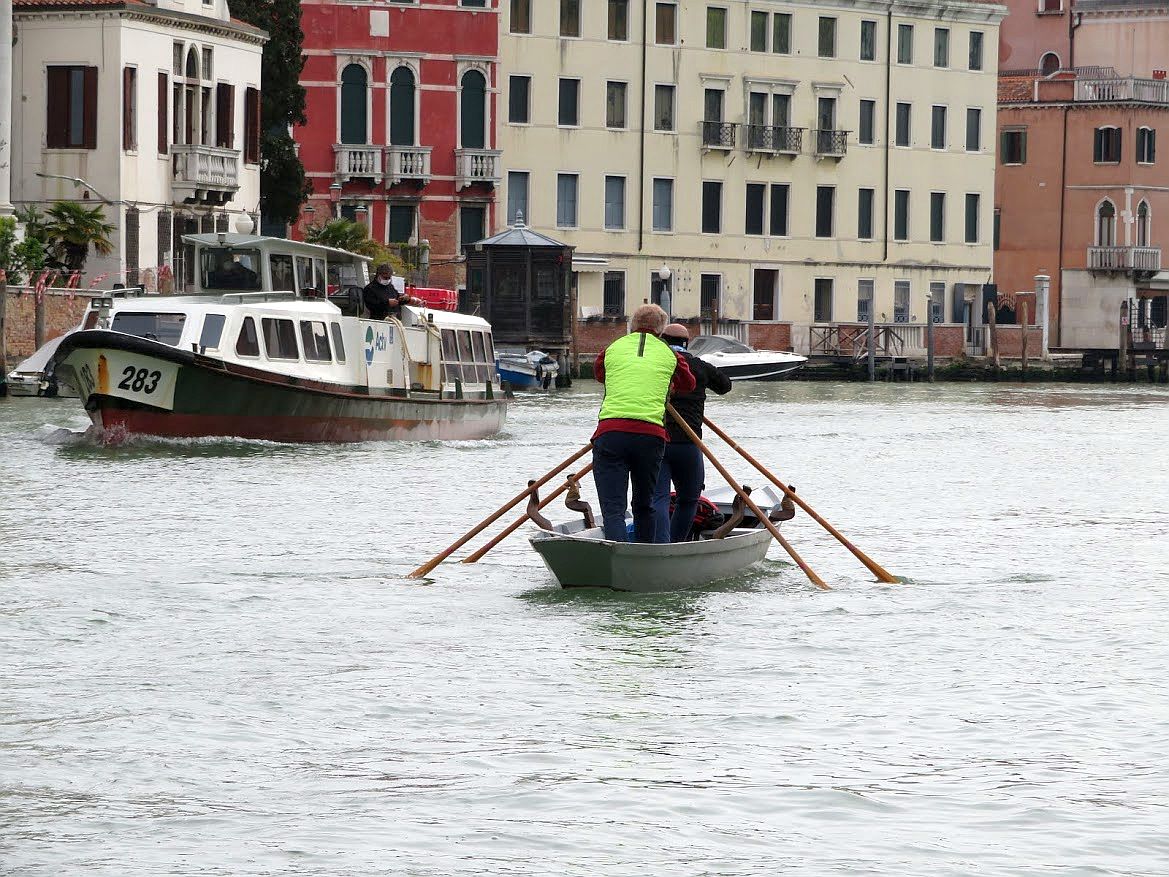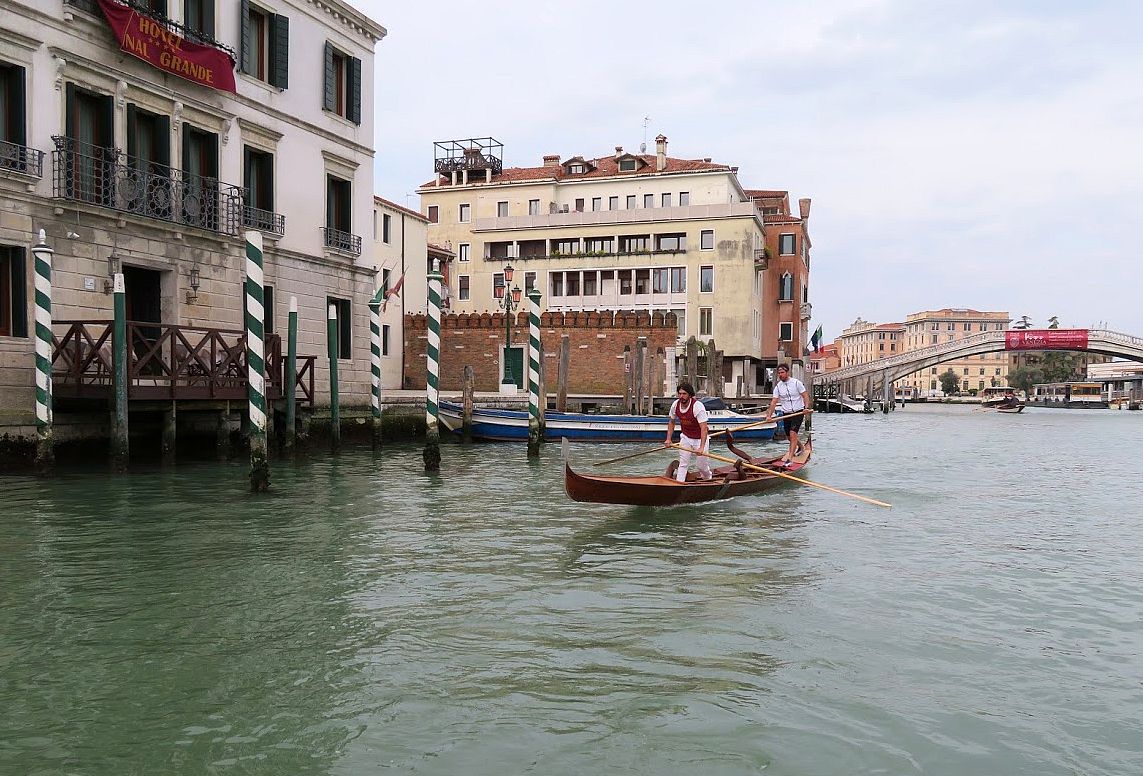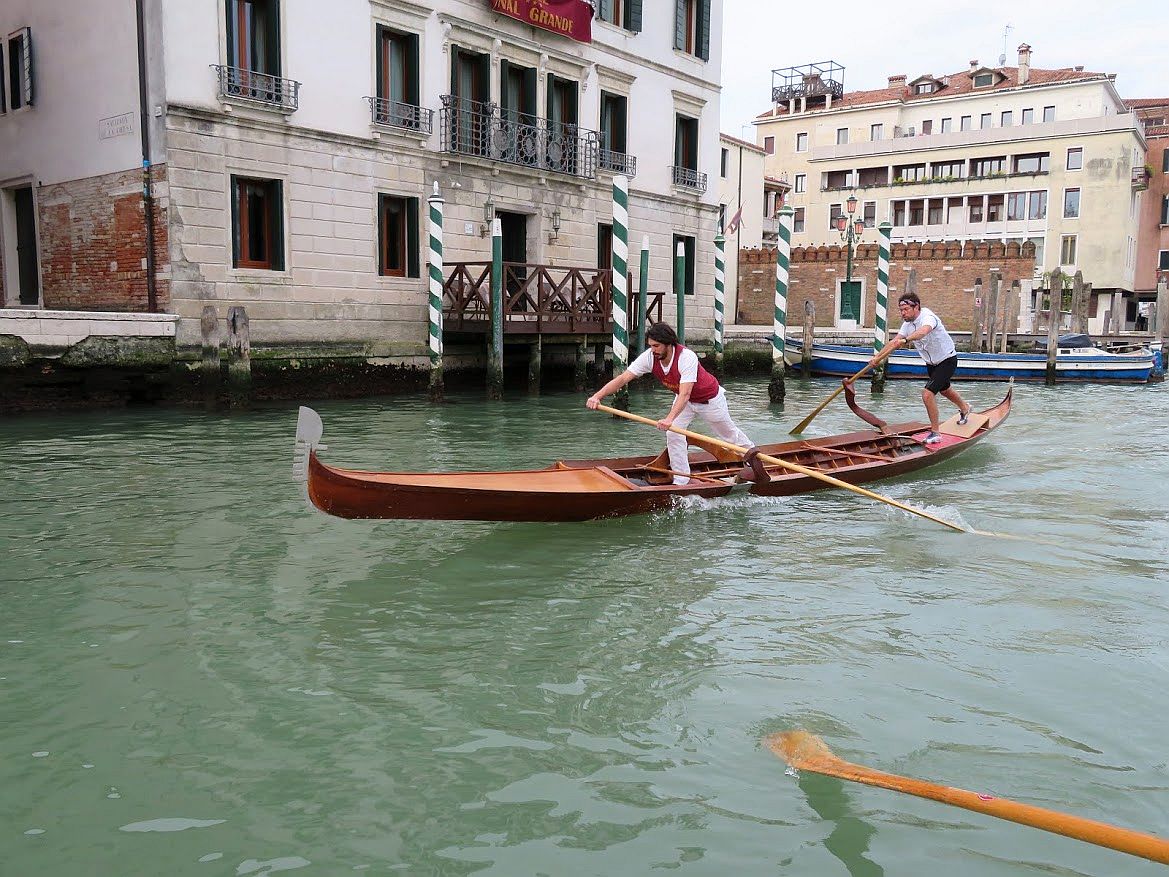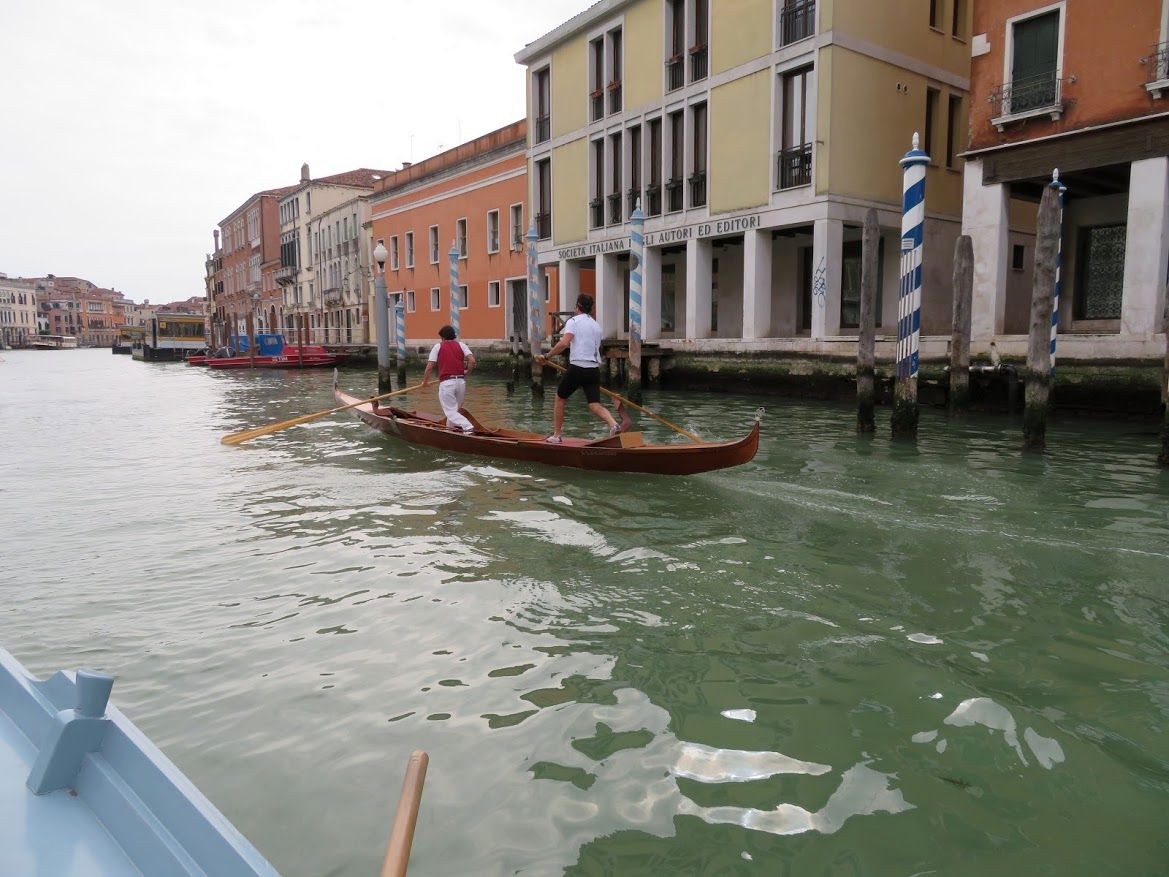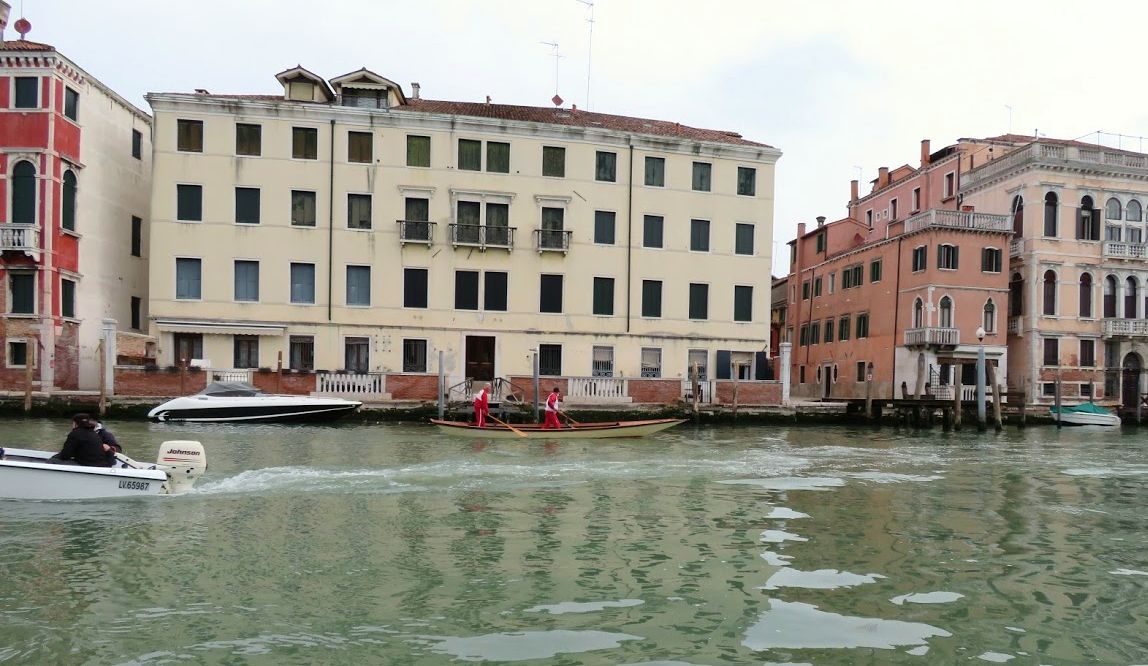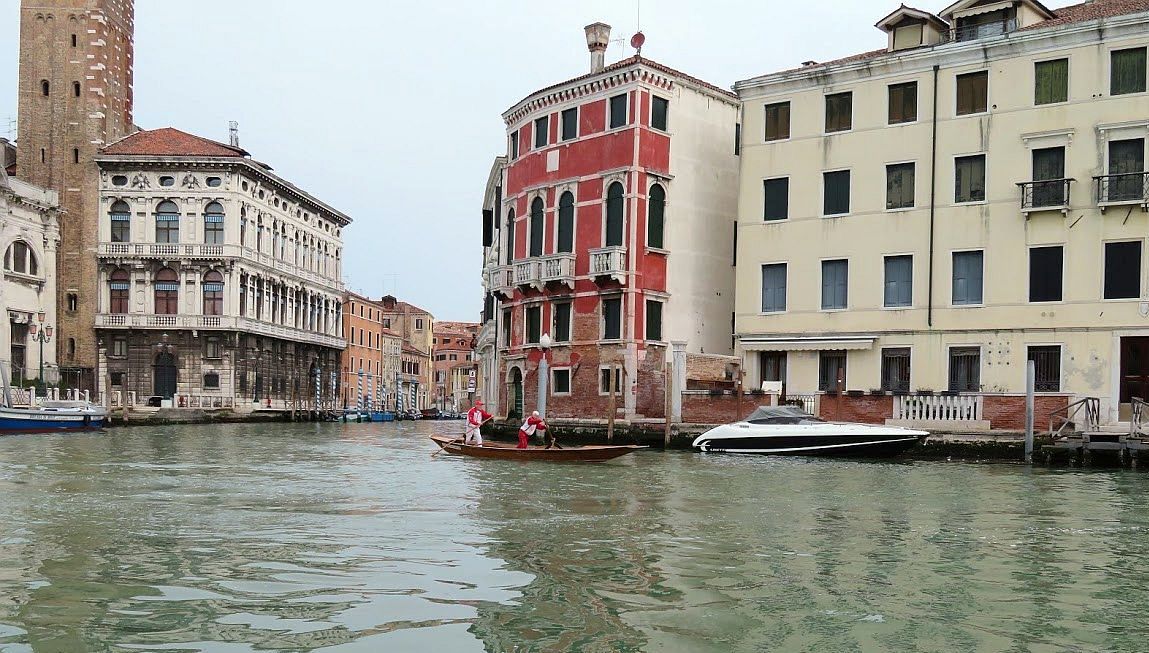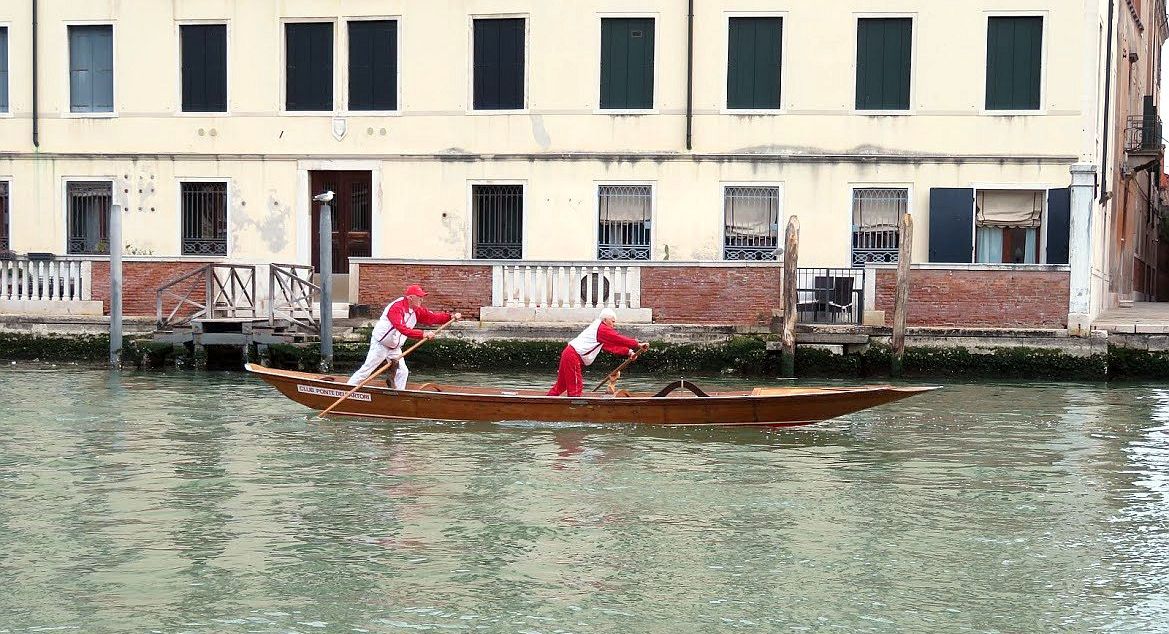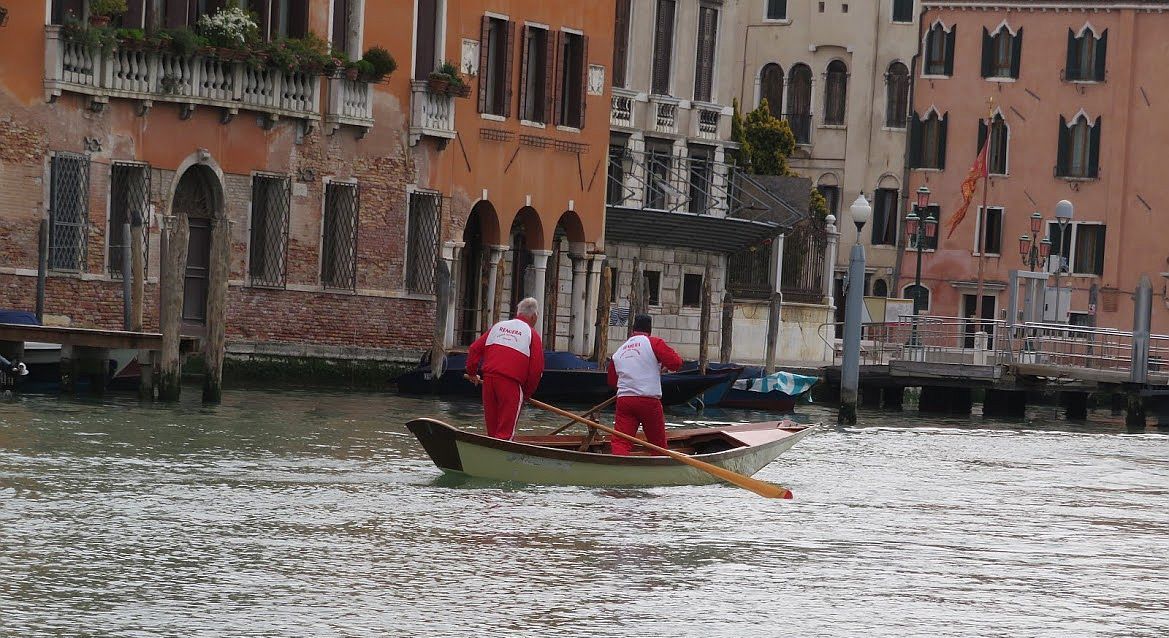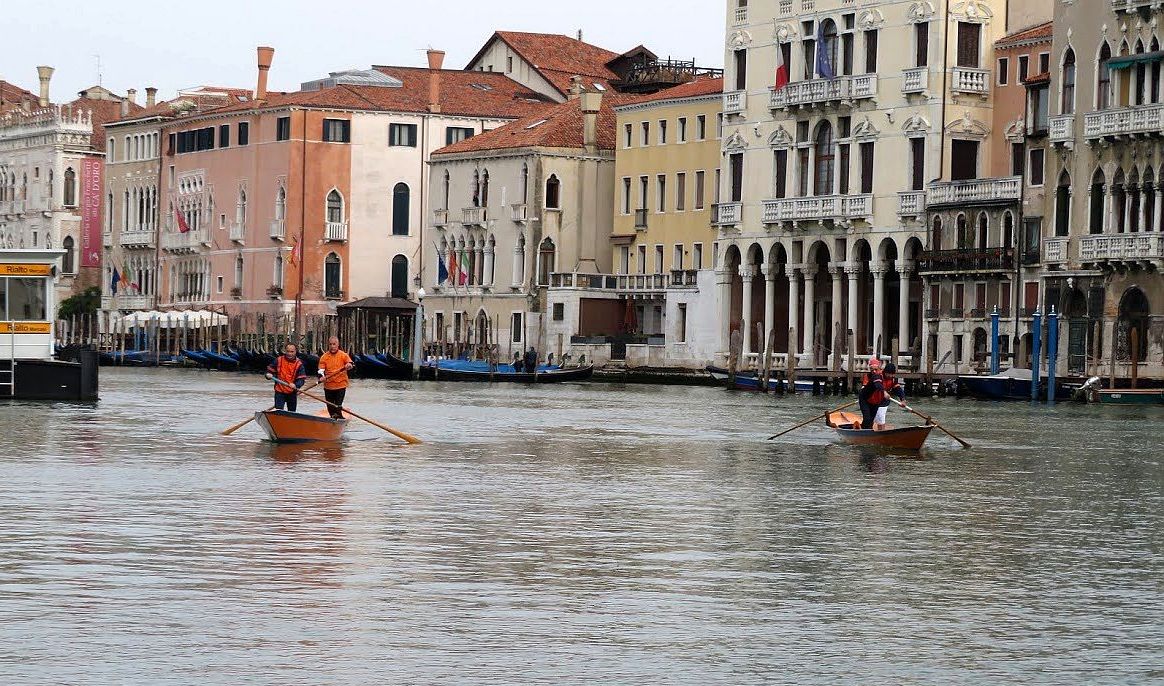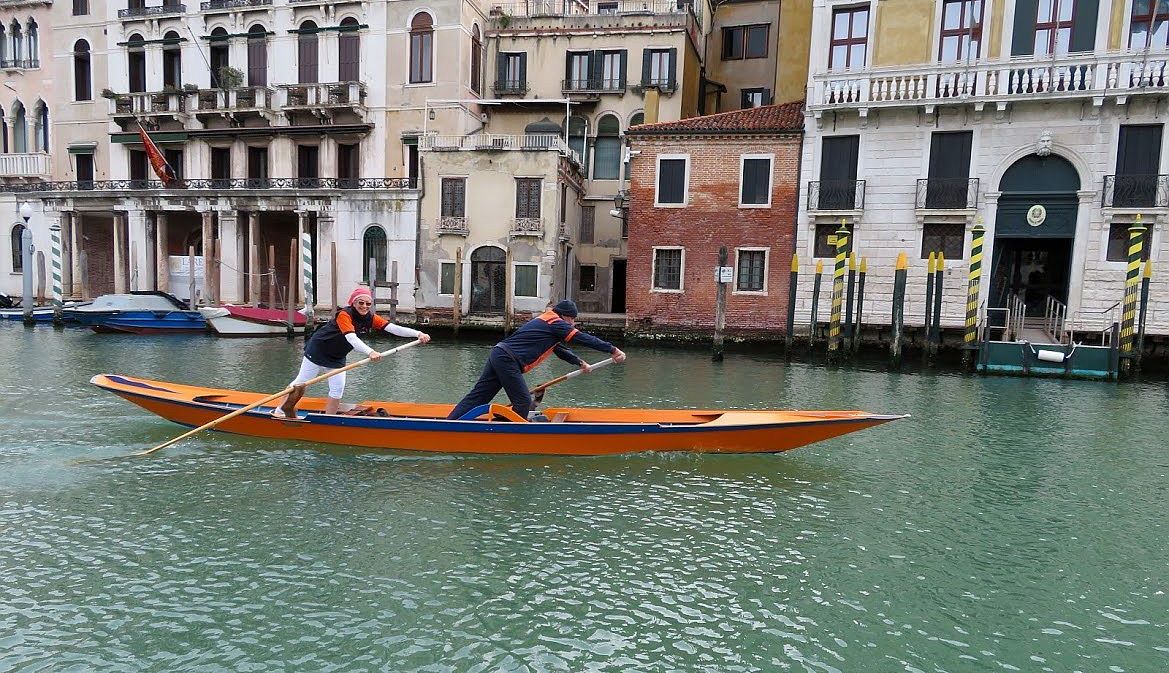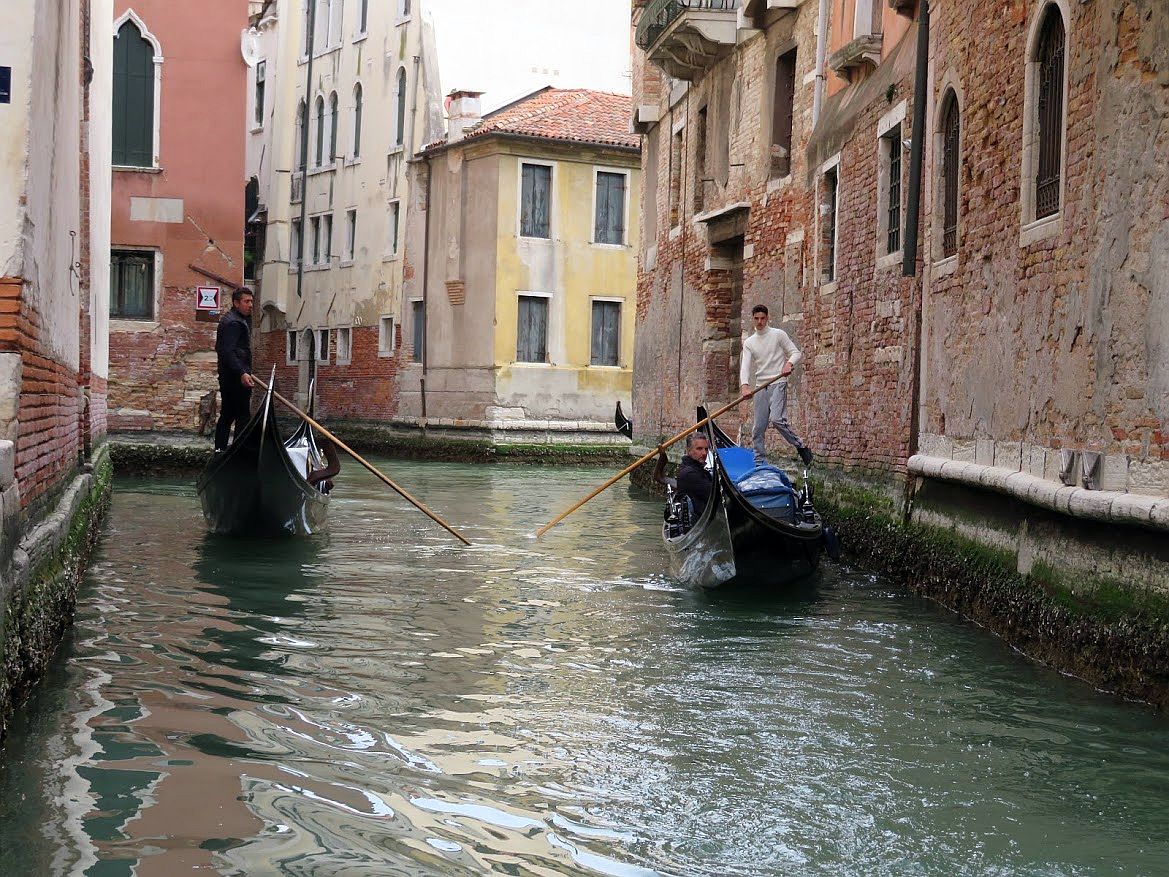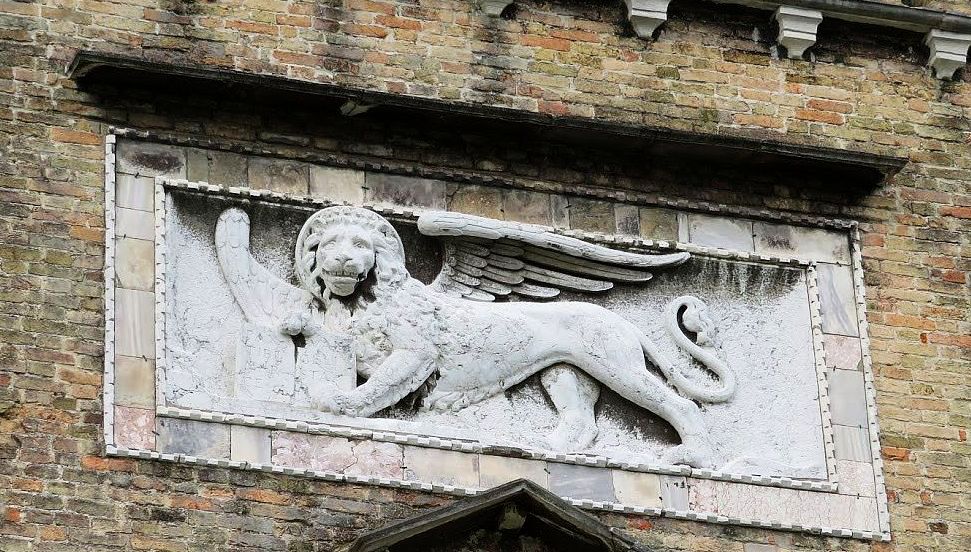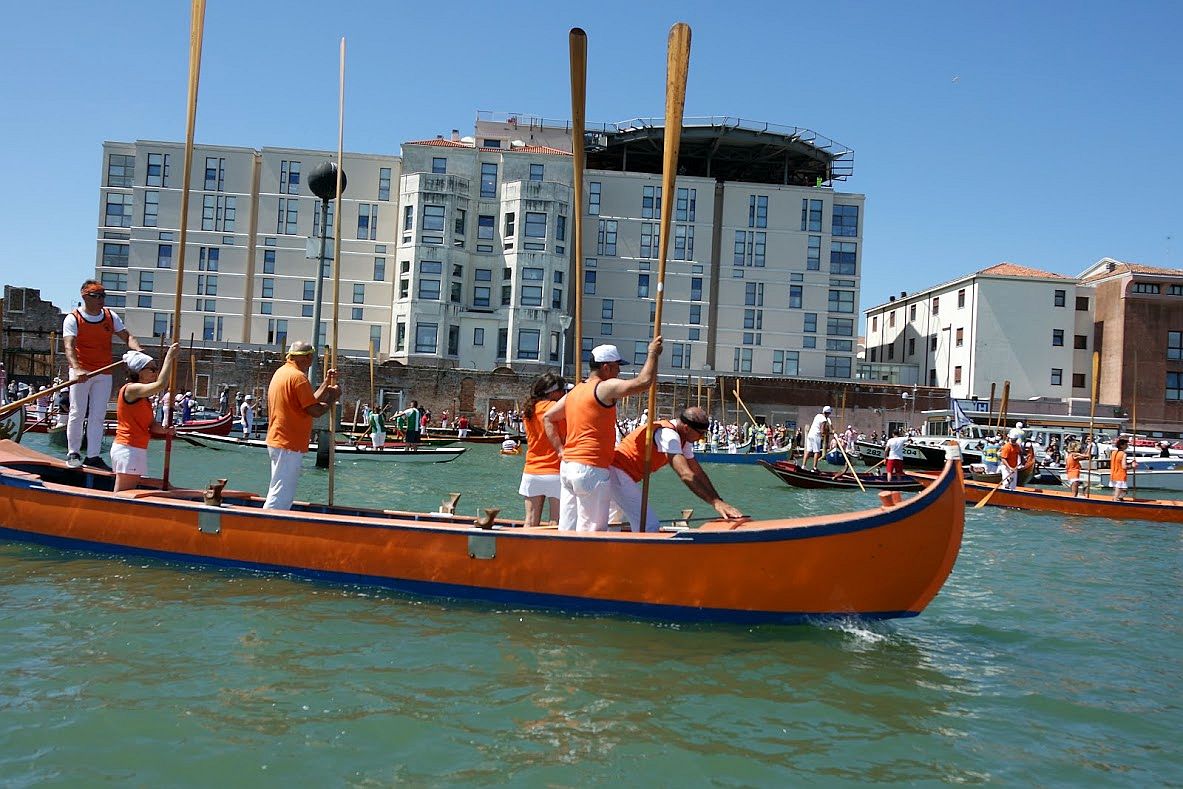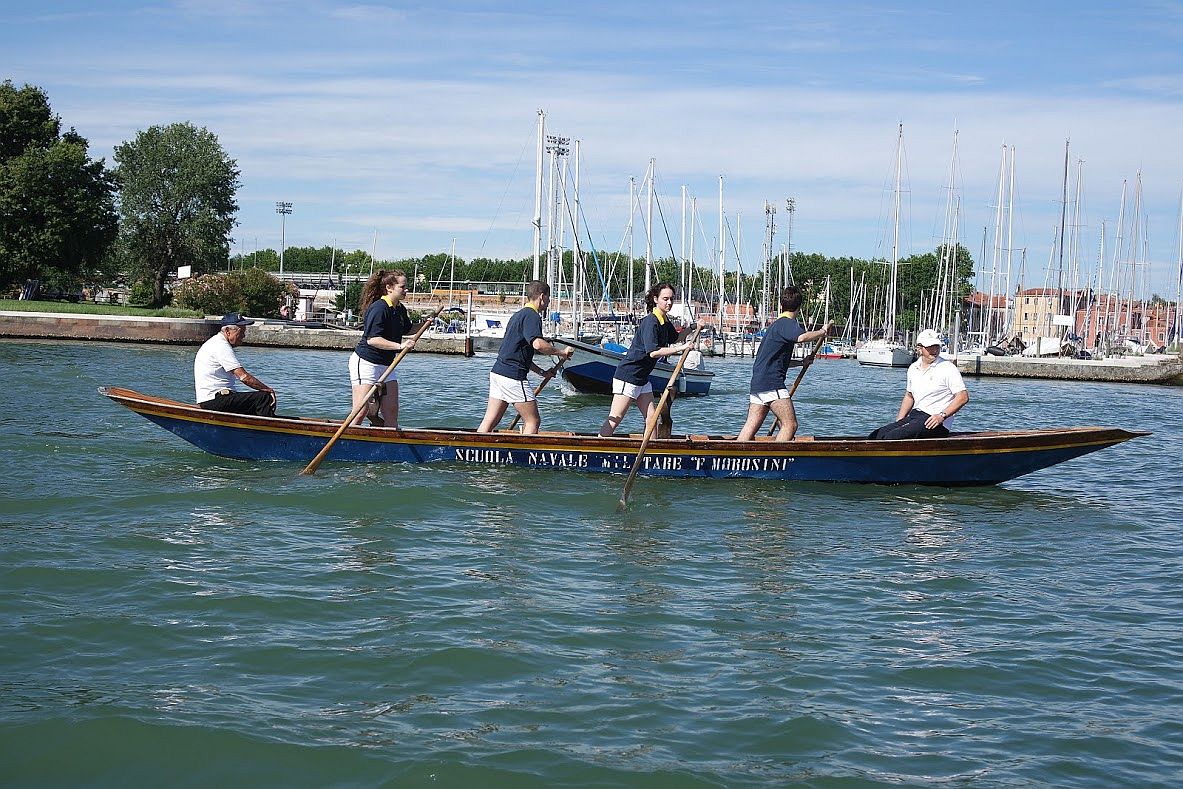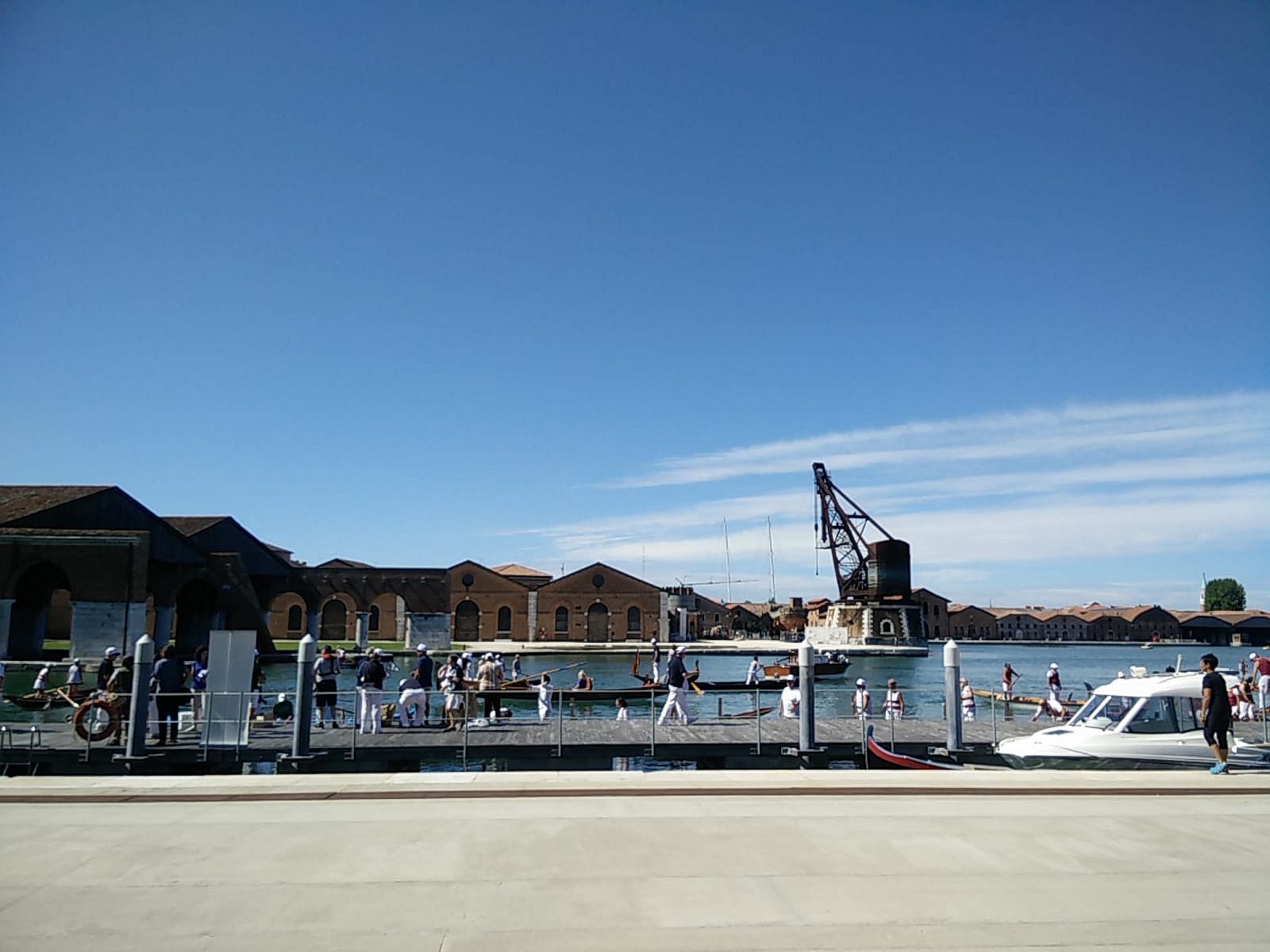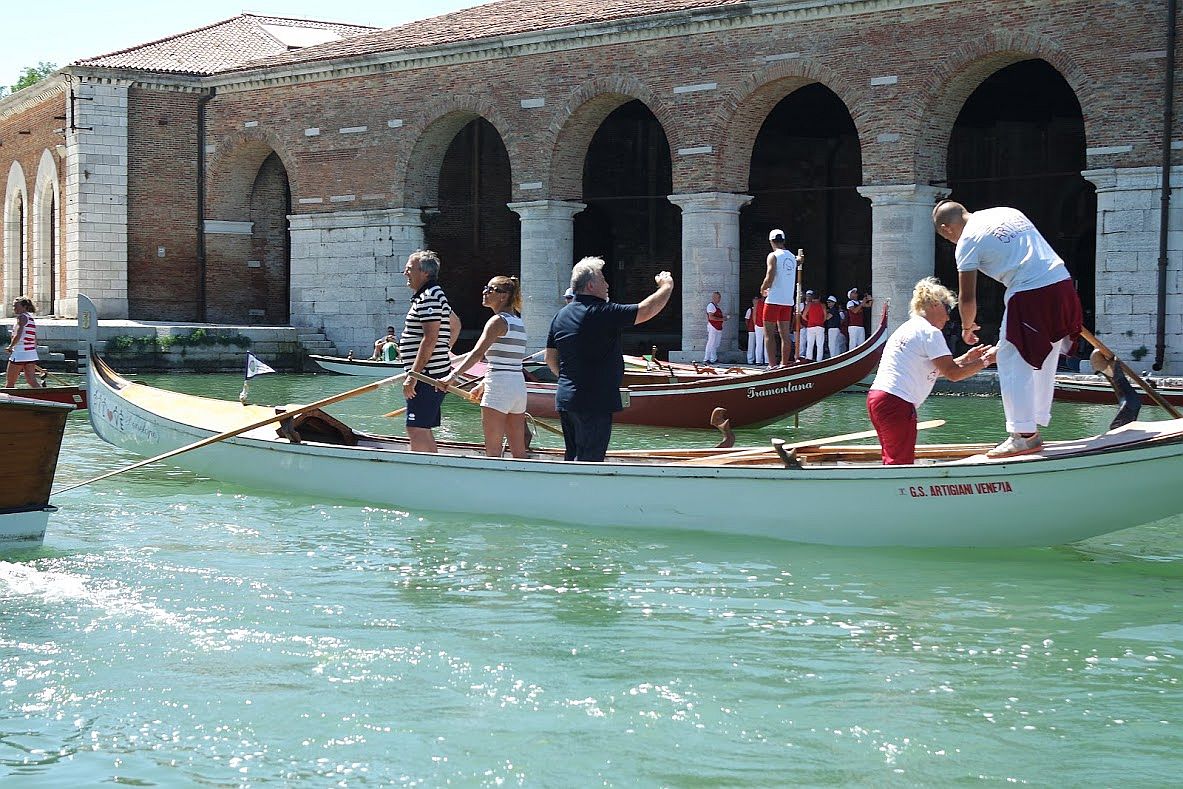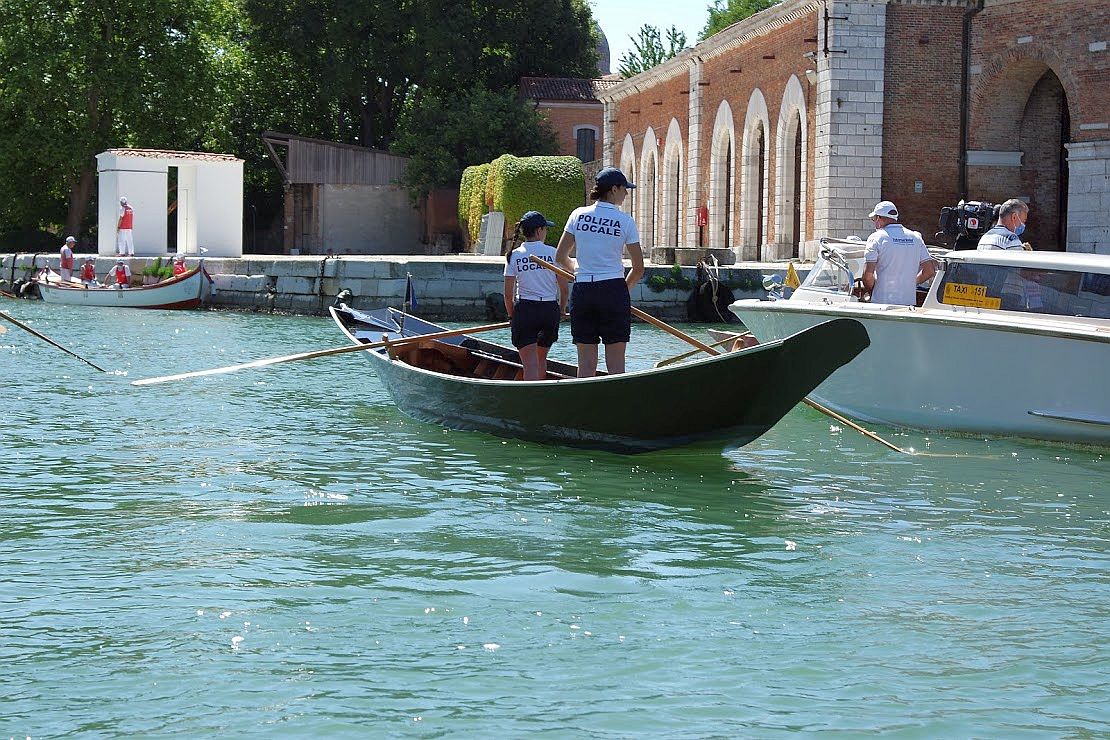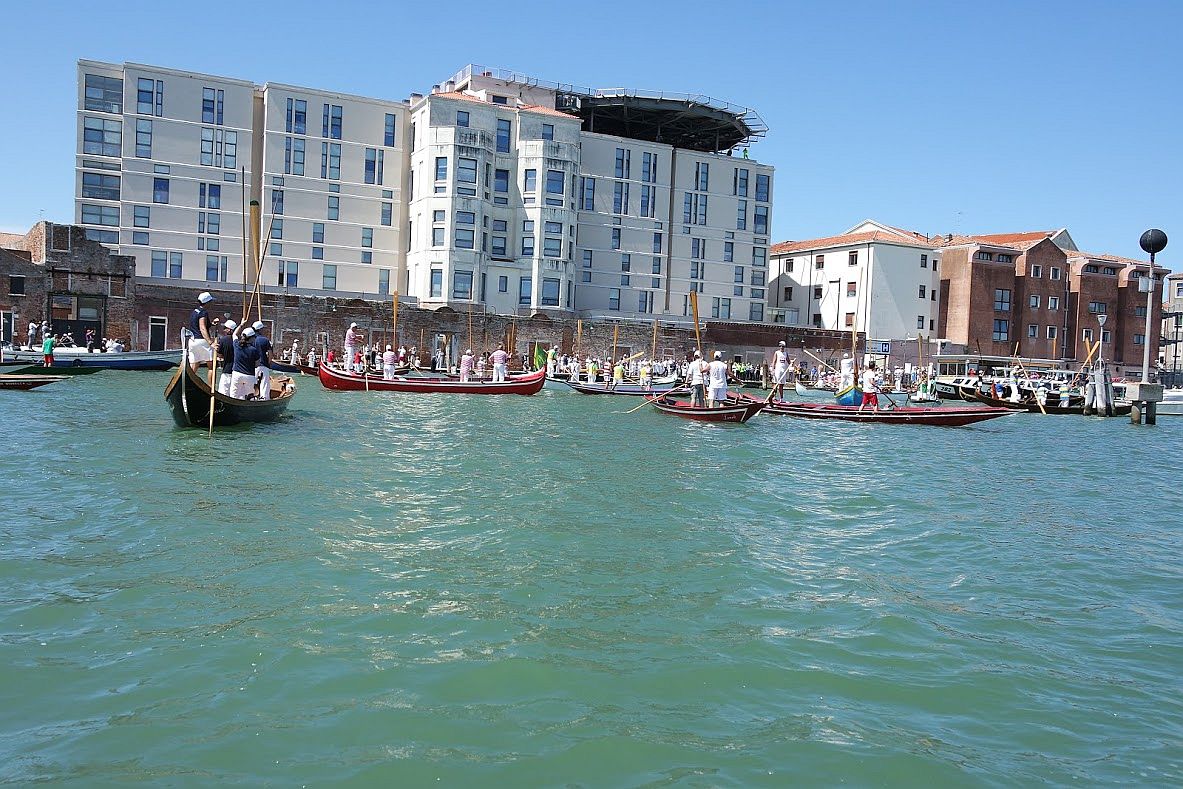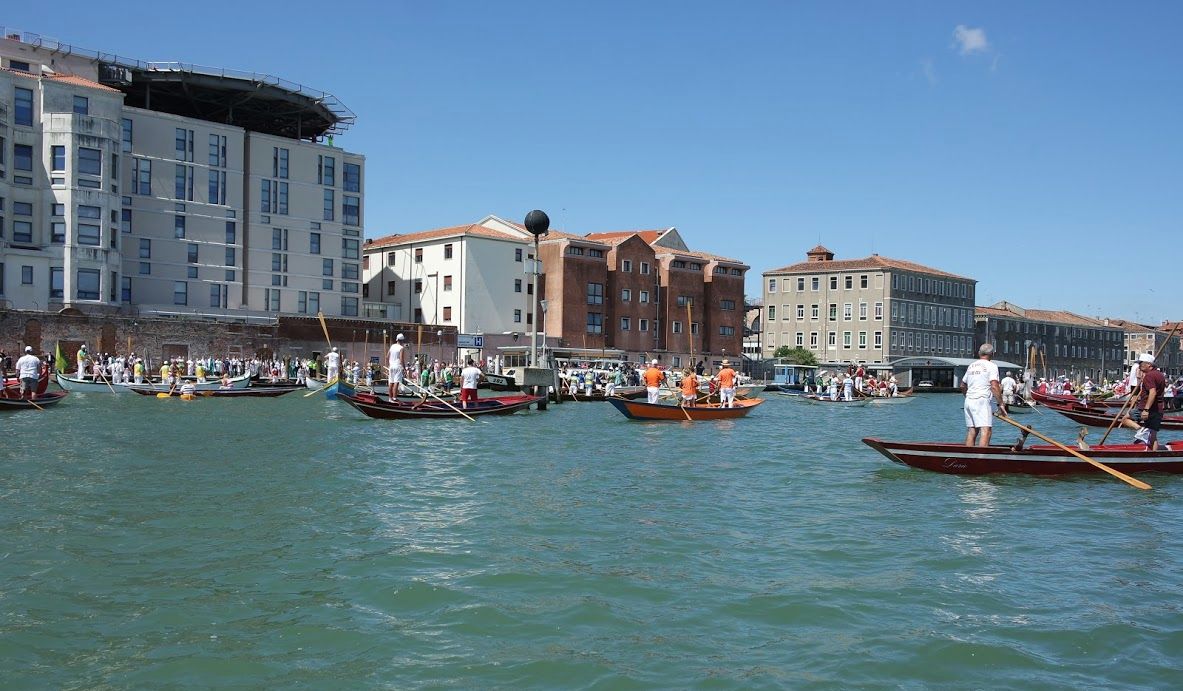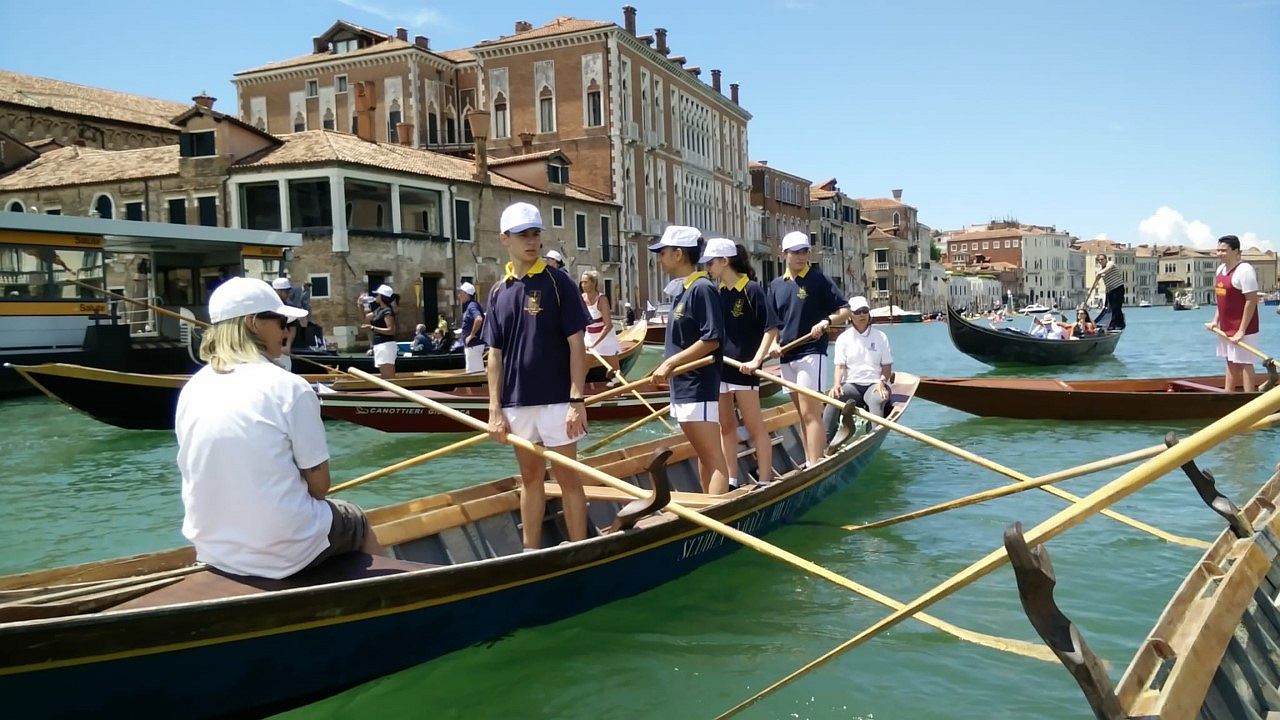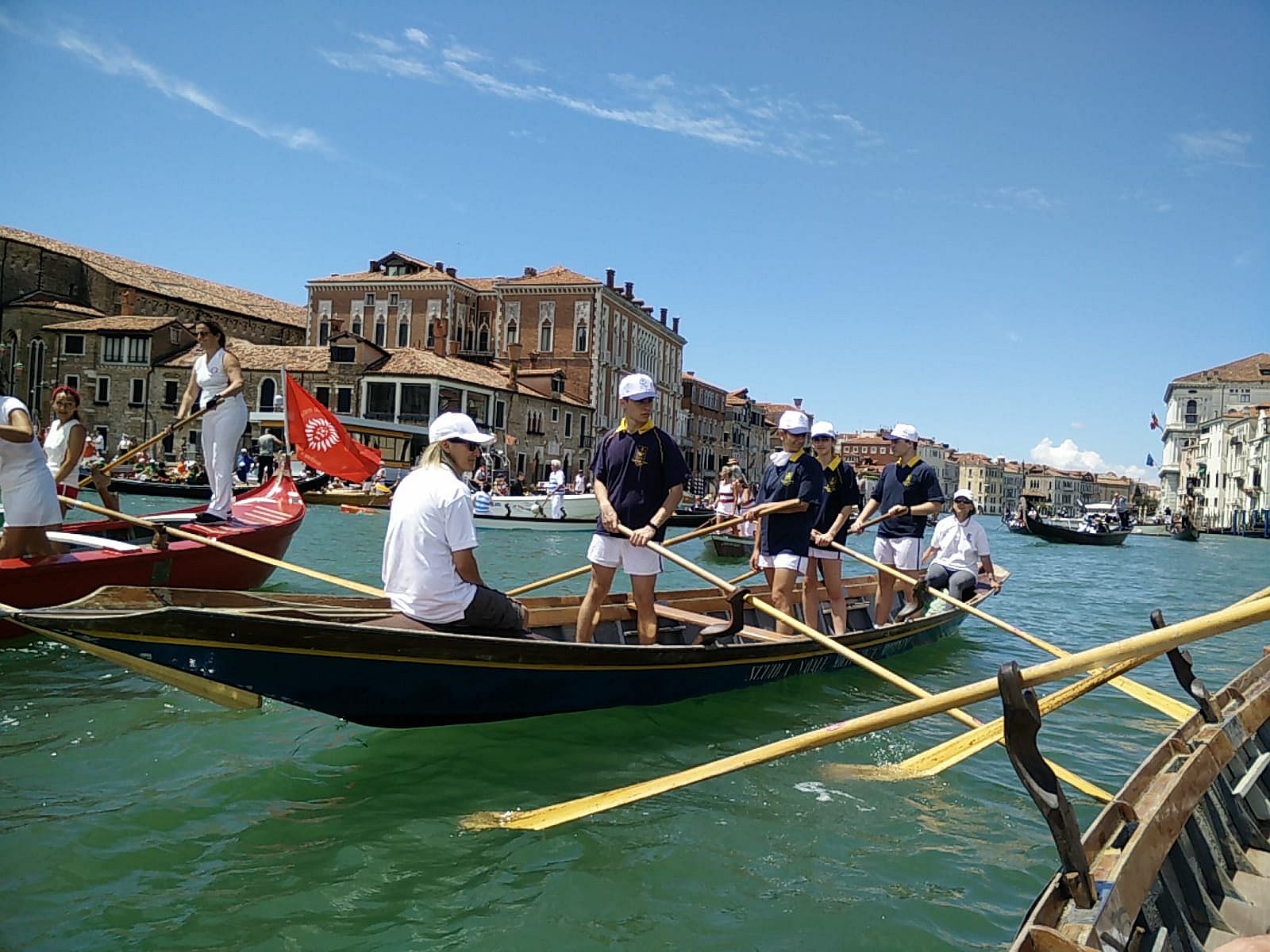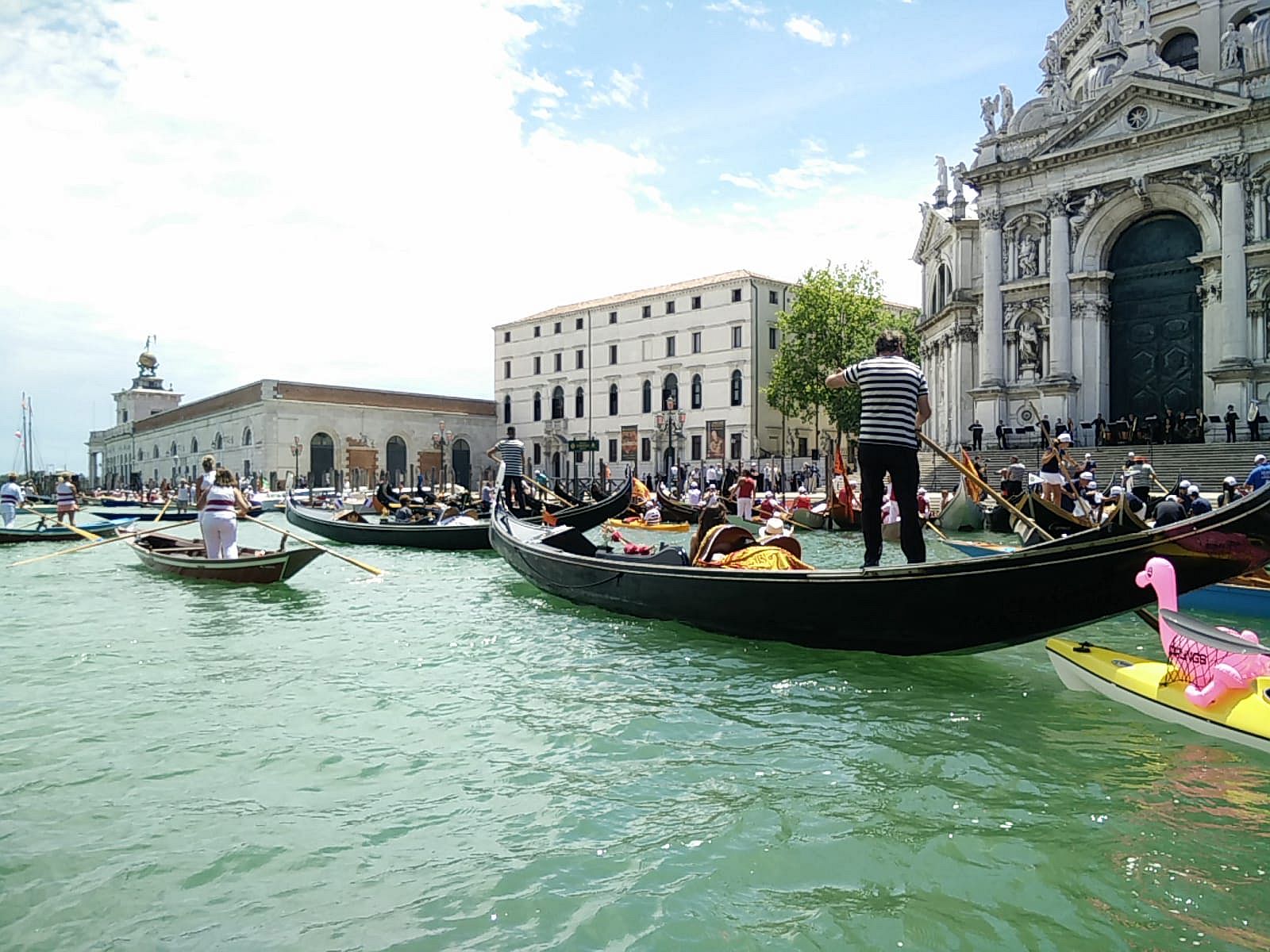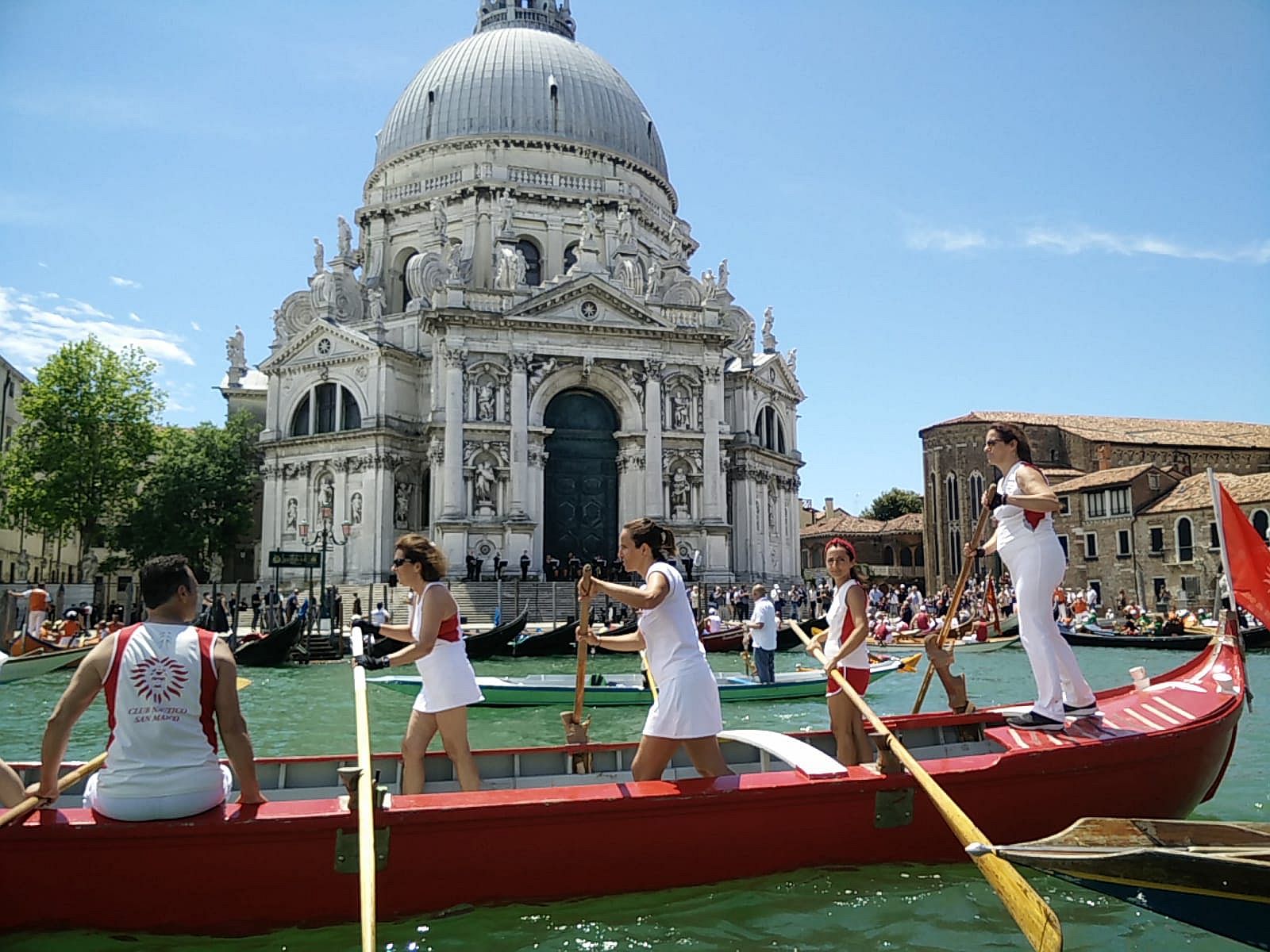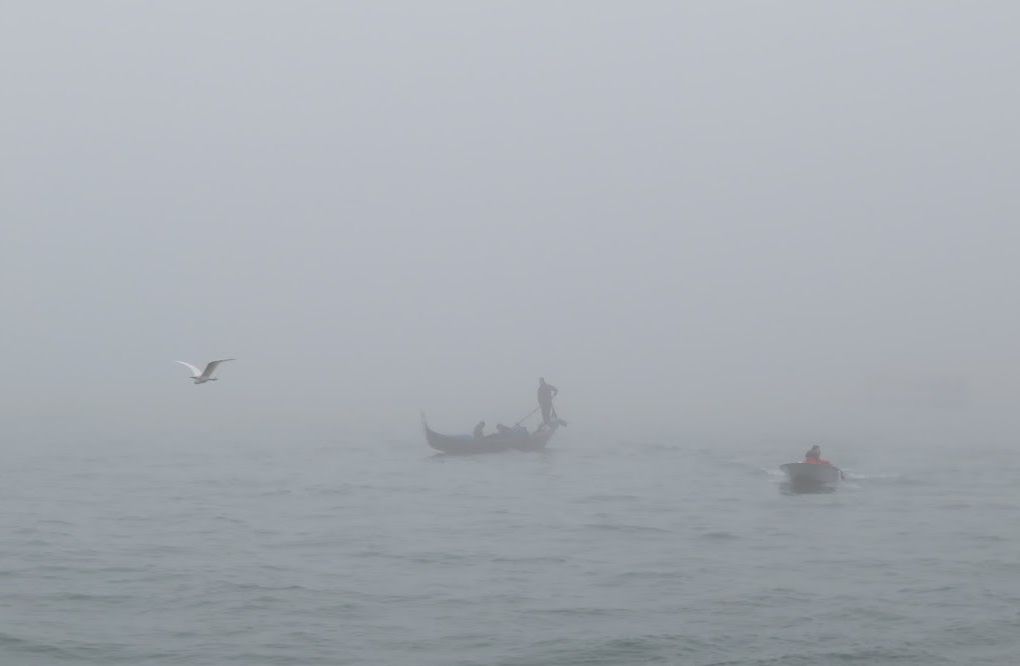
During the past two weeks there has been fog: Some days on, then sunshine, then back the fog rolls again. It’s very poetic and romantic, looked at one way. But it’s highly inconvenient if you need to take the vaporetto to do something unpoetic, because some lines are suspended, and the rest are all sent up and down the Grand Canal. This means that you may well be walking farther to your destination than you had budgeted time and energy for. Maybe you yourself can manage that, but if you’re a very sick and frail old lady — looking at you, Maria from upstairs — who has to get to the hospital for her chemotherapy, the fact that your vaporetto doesn’t exist today means you’re forced to take a taxi to the hospital. That’ll be 50 euros please. Going, and then coming home. Not at all poetic if you’re living on 750 euros a month.
But let’s say you’re on one of the vaporettos, living a routine day. Don’t relax completely. Because even though the battelli (the big fat waterbuses) have radar, and so does the ferryboat trundling up and down the Giudecca Canal between Tronchetto and the Lido, that doesn’t guarantee that the drivers are looking at it, or if they are, are understanding what they are seeing. Radar, much like bras or penicillin, is intended to help you, but only if you actually use it.
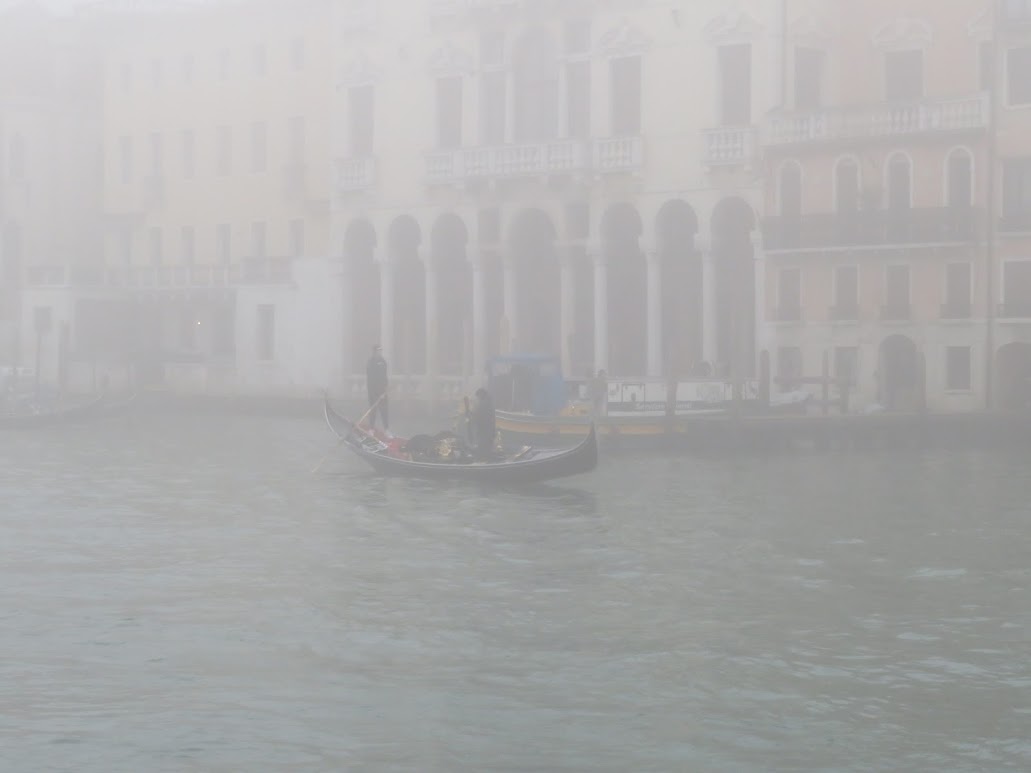
I mention this because yesterday the fog was pretty thick. And around 1:00 PM, the #2 that crosses the Giudecca Canal between the Zattere and the Giudecca itself collided with the ferry. At that point the two routes are operating at right angles to each other. Everybody knows this. I mean, one shouldn’t be even minimally surprised to find these two boats out there.
But find each other they did. In the collision nobody was hurt, but one passenger temporarily lost his mind and punched the marinaio, the person who ties up the boat at each stop, in the face. Why the marinaio? Because he was there, I suppose. He certainly wasn’t navigating. Nor was the captain, evidently.
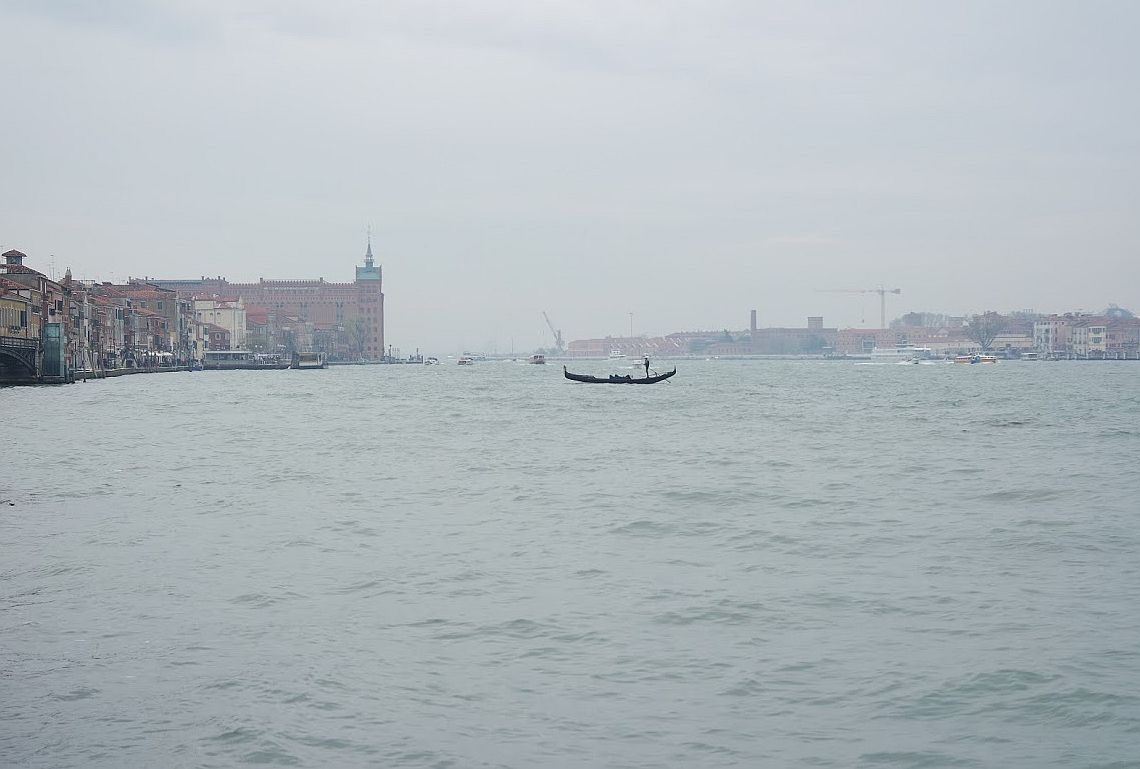
To translate the phrase in the brief article in La Nuova Venezia, “Probably the incident was caused by the thick fog.” I don’t mean to be pedantic, but “The fog made me do it” doesn’t sound quite right. The fog had been out for hours; it hardly sneaked up on the boats from behind. The pedant further wonders why the fog gets all the blame. It didn’t grab the two boats and push them together, like two hapless hamsters. One might more reasonably say that the incident was caused by two individuals, one per boat, who were not paying attention either to the water ahead or to their radar. Footnote: These vehicles operate on schedules. I’m going to risk saying that one could easily predict when they would be, as they put it here, “in proximity to each other.” If one wanted to.
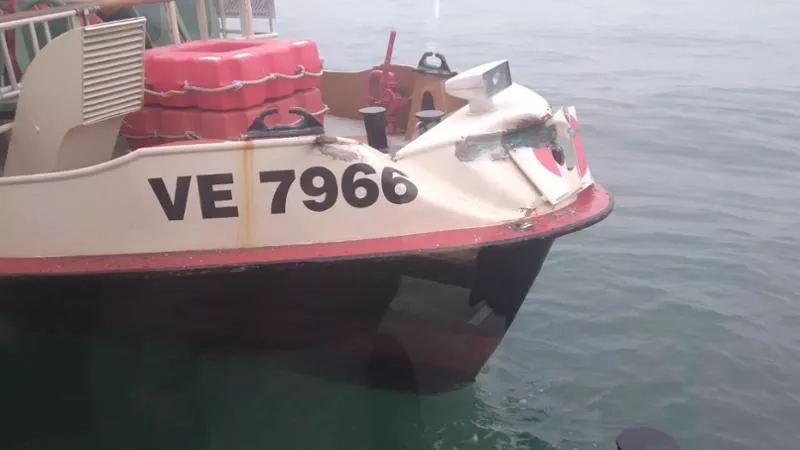
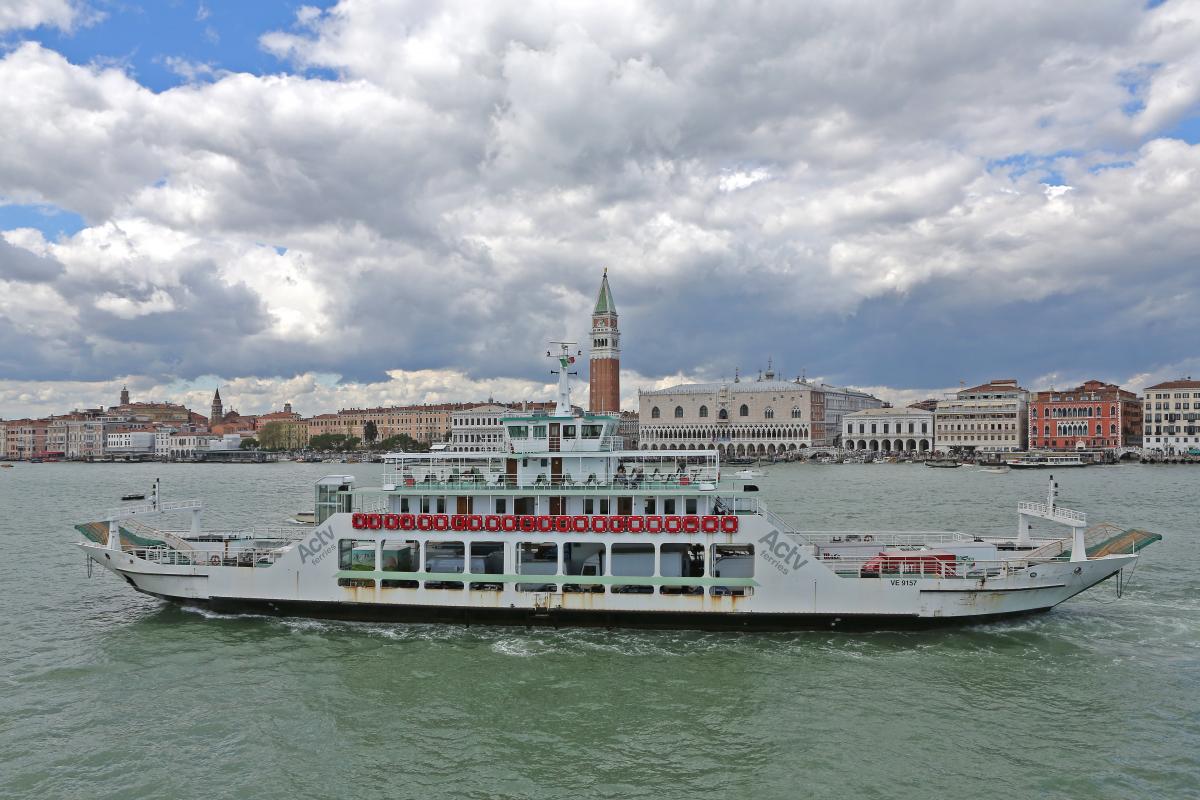
But let’s return to the poetry.
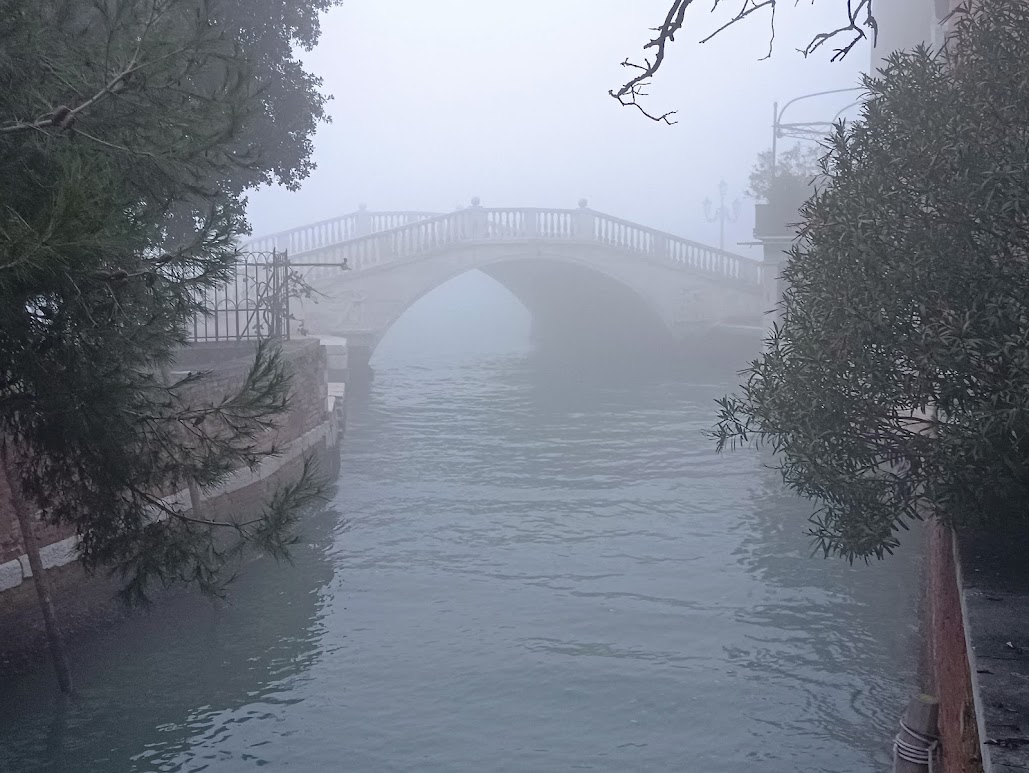
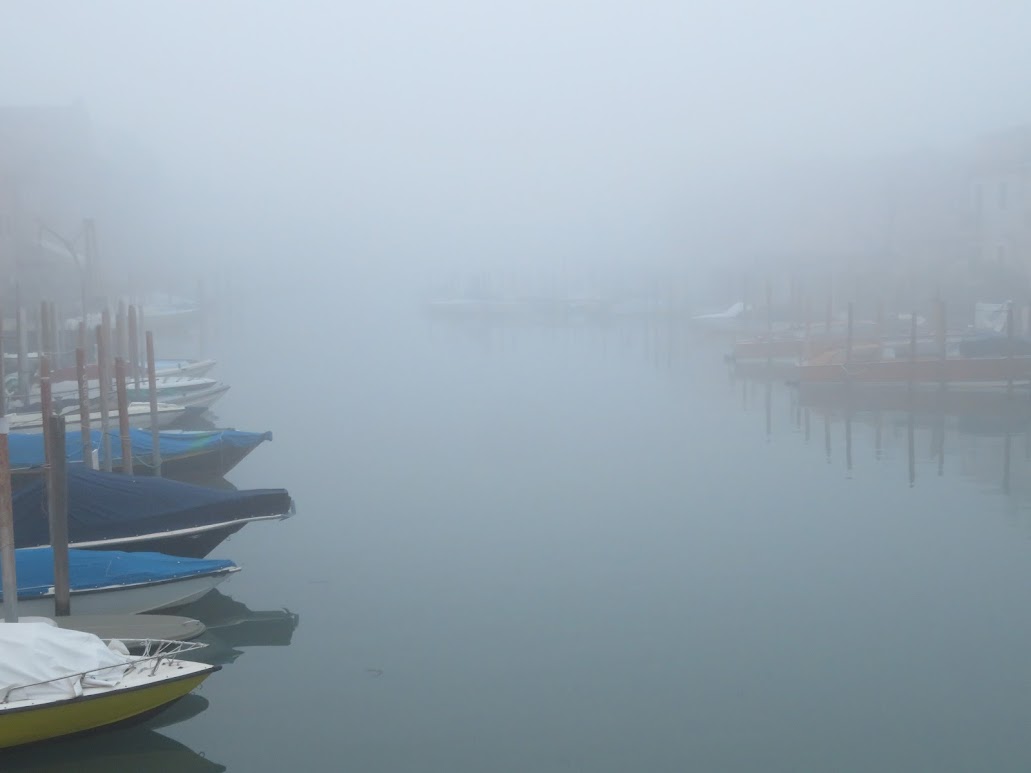
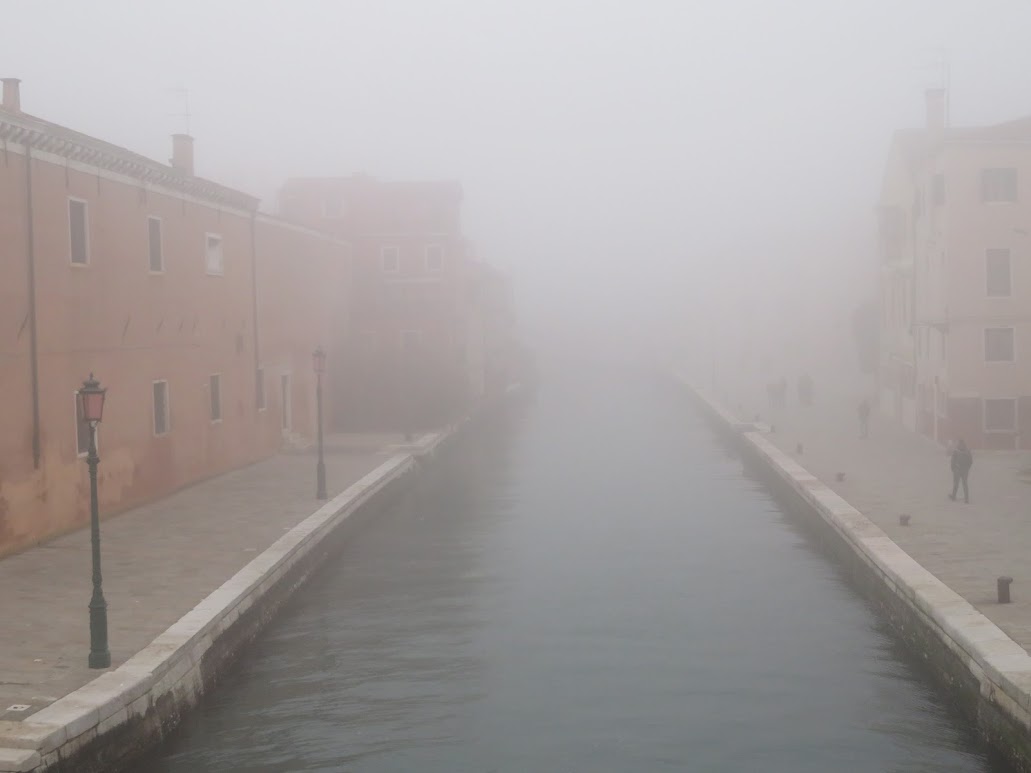

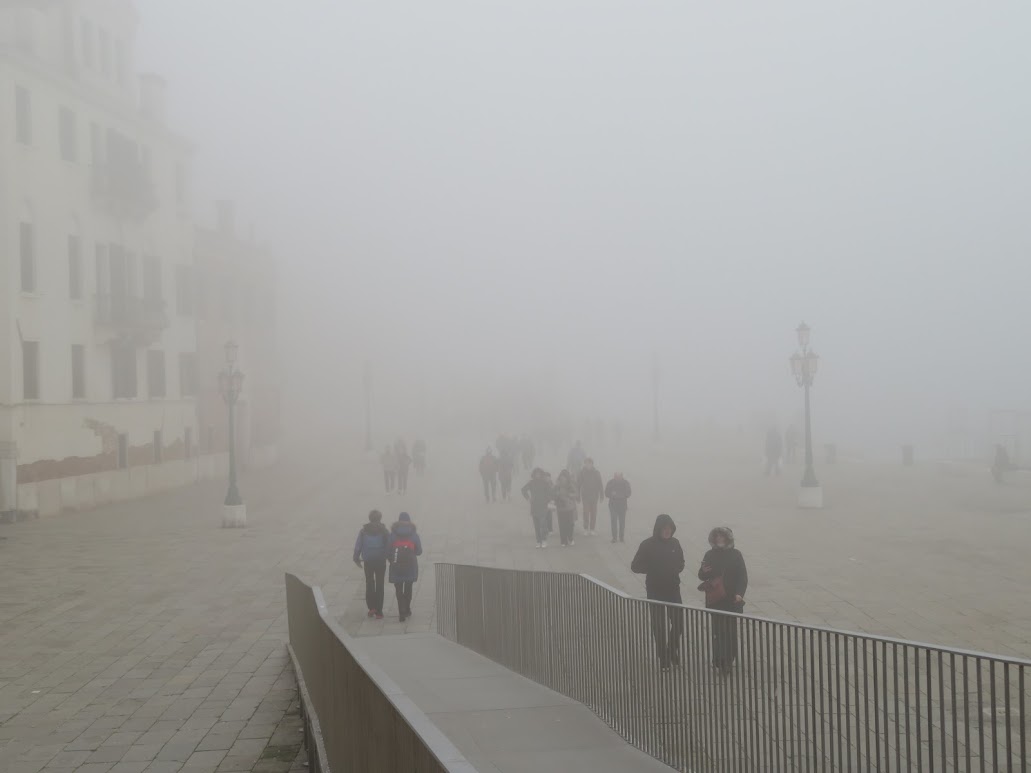
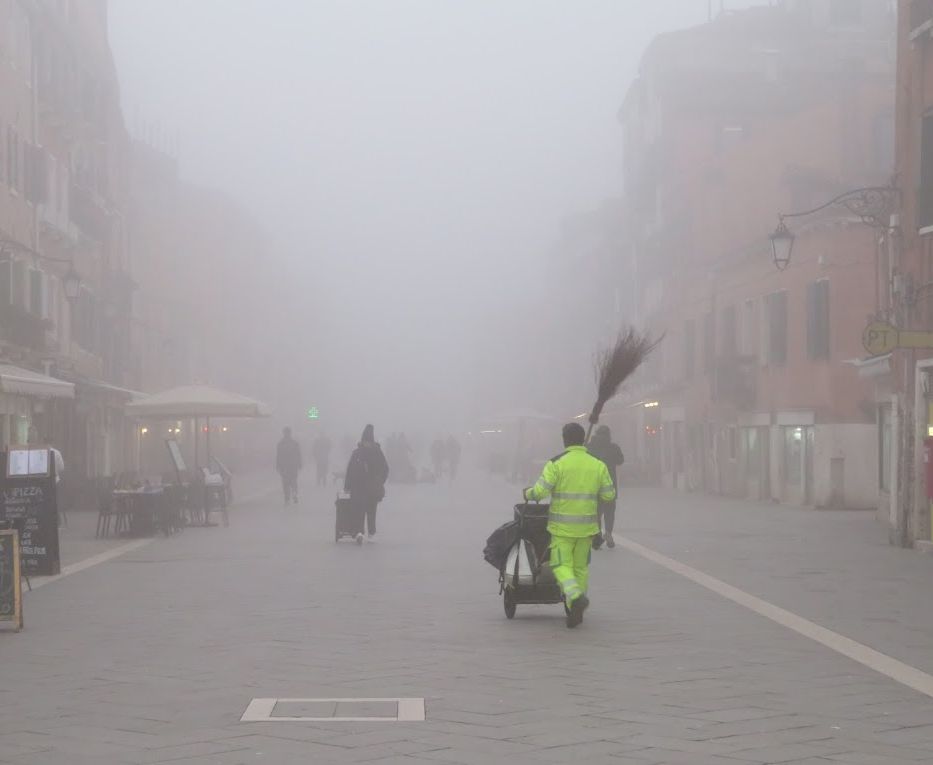
Rio de la Ca’ di Dio. The forecast is for more fog tomorrow. If I put on my gray coat, I’ll disappear.

